Amy’s 8th Grade Reading List
In our history cycle, 8th grade is all about Africa’s history and literature — plus some physics for fun.
In our history cycle, 8th grade is all about Africa’s history and literature — plus some physics for fun.
This reading list follows our very non-traditional history rotation, which means the focus is on African history and literature. For this year, I’d definitely assign a history or science research paper that would let kids practice putting all their research, critical thinking, and writing skills together in one big project, and we’d be working a lot on taking notes and test-driving systems to manage long deadlines effectively. If I could, I’d plan a field trip to the Smithsonian’s National Museum of African Art. (I’d also work in this little lesson on Ghana’s children’s music from Folkways.)
Summer Reading
I try to use summer reading to “bridge the gap” between the previous year and the upcoming one, so in this case, I’m looking for connections between U.S. history and Africa.
Tristan Strong Punches a Hole in the Sky
I mean, I love this book, so I would take any opportunity to recommend it, but it slides very beautifully into this gap: New Yorker Tristan discovers he’s a Storyteller with a connection to the very real world of African myth and folklore.
African History/African Literature
Spine: Africa Counts: Numbers and Patterns in African Cultures (This is a fascinating look at mathematical thinking among sub-Saharan people, and it gives you a cool context for critical reading.)
Africa Is Not a Country
This is a little outdated and skews a little young, but I think it makes a good starting point to start thinking about “Africa” the way we think about “Europe:” as one big, diverse group of countries that get lumped together because of their similarities but that are definitely not interchangeable.
Seven Natural Wonders of Africa
This is a fun way to bring a little geography in.
Early Art and Architecture of Africa
I feel like you need one coffee table art book if you’re combining literature and history for humanities — and I like that this one includes architecture and focuses on seven specific regions.
Dinosaurs, Diamonds, and Democracy: A Short, Short History of South Africa
This isn’t a perfect book, but it’s a nice condensed look at the history of South Africa from prehistory to post-apartheid. I find it handy for setting the scale of African studies.
Akata Witch
This is way more than the Nigerian Harry Potter, but come on, didn’t I have you at “Nigerian Harry Potter?” Sunny returns home from the United States to Aba, Nigeria, where she discovers that she is one of the magical Leopard People.
A Long Walk to Water
I tried to avoid “sad books” for this unit because I don’t want my kids to associate African literature with sadness — there’s a lot of fun, funny African writing! But I did add this one to the list because I think the intersecting stories of two Sudanese children from different time periods manages to be both important and hopeful.
Zahrah the Windseeker
Speculative fiction from a uniquely African perspective — I really enjoyed this one.
The Royal Kingdoms of Ghana, Mali, and Songhay: Life in Medieval Africa
I don’t know about you, but I never learned about medieval Africa in school — and it’s so interesting! Usually we start where this book ends, with the introduction of the slave trade, but this book digs into the history of three of West Africa’s significant and sophisticated kingdoms.
Nzingha: Warrior Queen of Matamba, Angola, Africa, 1595
This book isn’t perfect, but I like it because it’s based on a real woman, the leader of the Mbundu people of Angola in the late 1500s and because it tackles a real historical problem: Nzingha fights to keep the Portuguese out of Africa because she believes their kind of slavery is wrong. This is a great conversation starter for talking about how European slavery in the 16th century became racist in a way that made it different from other forms of slavery.
King Shaka: Zulu Legend
Shaka may be southern Africa’s most famous 19th century ruler, and this graphic novel tells the story of how he consolidated his power, partly through an alliance with white colonists near the Port of Natal. There is a lot of complicated stuff happening with Shaka and his brother and the Zulu people, so it might be a good idea to read an overview of the actual history before you dive into this one.
Sundiata: Lion King of Mali
Think of this as the Iliad or Gilgamesh for 13th century Mali — the full text might be a bit much for a middle schooler to tackle, but this picture book is an excellent introduction.
Indaba My Children
This collection tells the story of life for the Bantu people (of west and central Africa) from the time of the Phoenicians to the present, so it’s a great mix of literature, history, and philosophy.
In Our Village: Kambi ya Simba Through the Eyes of Its Youth
I love that this book of photos and essays was actually created by kids in a Tanzanian village.
Once Upon a Time in Ghana
I kind of love how this book is both a collection of traditional Ewe stories and a study of cultural storytelling. (I’d save this one until about mid-year, when you feel like you have an understanding of a few different African cultures to ground your reading.)
Talking Drums
This is a nice collection of traditional and modern African poetry from several different countries.
Abina and the Important Men: A Graphic History
Did you know that in 1876, an enslaved West African woman took her “owner” to court after she escaped into free territory? I sure didn’t! This graphic novel is an interesting look at Africa’s Gold Coast at the height of 19th century imperialism.
It's Trevor Noah: Born a Crime: Stories from a South African Childhood
Comedian Trevor Noah tells the story of growing up in South Africa as the child of white European dad and a Black South African mom — an illegal union that made him an illegal kid in the racist apartheid government of the time. Noah is often hilarious, which makes this book’s tough subject go down a little easier. (You could definitely sub the adult version of this book — it just has more swearing and more details about Noah’s time in jail.)
The Boy Who Harnessed the Wind
This true story about a Malawi boy who built a windmill for his village is both a great look at modern life in one section of Africa and an inspiring story about ingenuity and determination. (Read this when you’re studying electricity in physics!)
So Long a Letter
Abandoned wife Ramatoulaye expresses her frustration at Senegal's sexist legal system in a long letter to her friend in this book, which was written during the very early days of Senegal's feminist movement.
Cry, the Beloved Country
This is probably the most challenging book on the list, but if you’ve got a confident reader, it’s an amazing read. Feel free to save it for another year if it seems like too much right now — it’s worth waiting for.
Physics
Spine: Junk Drawer Physics: 50 Awesome Experiments That Don’t Cost a Thing
Spine: Newton at the Center (with the Student Quest Guide)
Thing Explainer
This is such a funny book that uses the simplest words possible to explain complicated things — for instance, helium becomes “funny voice air.”
The Way Things Work Now
A classic!
Basher Science: Physics
My kids love these cartoon-y, information-packed subject introductions.
Fatal Forces
This Horrible Science book makes gravity and the other forces of nature irresistibly interesting.
The Manga Guide to Electricity
You’ll learn lots abut how electricity works in this entertaining story of an average high school student from the land of electricity who has to make up her flunked electricity exam with summer school on Earth.
The Age of Miracles
A fictional take on a big science question: What would happen if the laws of physics on our planet changed?
Death by Black Hole: And Other Cosmic Quandaries
This essay collection by Neil deGrasse Tyson breaks down lots of complicated astrophysics ideas into totally understandable bites. For me, this is the fun part of physics, so I like to spend a lot of time with it.
(We’re Amazon affiliates, so if you purchase something through an Amazon link, we may receive a small percentage of the sale. Obviously this doesn’t influence what we recommend, and we link to places other than Amazon.)
Books Inspired by Jane Eyre
Charlotte Bronte’s Victorian heroine has a spine of steel and a spirit of adventure — no wonder she’s inspired so many literary homages.
Charlotte Bronte’s Victorian heroine has a spine of steel and a spirit of adventure — no wonder she’s inspired so many literary homages.
You could make a fair case that Jane Eyre — with its turbulent teen narrator determined to find her place in the world — stands as the first great English YA novel. Charlotte Bronte might not have seen it that way since the YA genre didn’t exist in 1847, but Bronte’s plain, fierce, stubborn heroine has inspired a slew of modern YA novels, many of which are worth your reading time. These are some of our favorites:
Brightly Burning by Alexa Donne
Jane Eyre in space! Stella Ainsley is thrilled to finally score a position as a governess on the private ship Rochester, a step up within the ragtag fleet of humanity circling the now-ice-encased Earth. The ship’s captain, notoriously volatile young Hugo Fairfax, develops an unheard-of soft spot for Stella, who suspects her new boss may be in the crosshairs of a conspiracy.
Rebecca by Daphne DuMaurier
If Jane Eyre were passively polite and Mrs. Fairfax was a little creepier, you’d find yourself in Rebecca, where the young second Mrs. de Winter is trying to adjust to life in the shadow of her husband’s larger-than-life first wife, whose presence continues to haunt their ancient manor house after her tragic death. Jane would have handled the whole situation much more efficiently.
Jane Steele by Lyndsay Fay
If Jane Eyre channeled her inner Dexter, you’d get this homage, starring a Jane who isn’t afraid to express her discontent with a bit of murder. Like Eyre, Jane Steele grows up with an unpleasant aunt and cousins before being sent off to a dreadful boarding school; unlike Eyre, Steele leaves a trail of bodies in her wake on her way to becoming a governess for Mr. Thornfield.
The Eyre Affair by Jasper Fforde
Jane’s first-person narration limits her experiences in this wacky sci-fi novel, in which a literary detective from an alternate Britain must leap into the novel to save its characters from a criminal mastermind. Jane, of course, mustn’t know what’s happening behind the scenes, or the book will be ruined.
(We’re Amazon affiliates, so if you purchase something through an Amazon link, we may receive a small percentage of the sale. Obviously this doesn’t influence what we recommend, and we link to places other than Amazon.)
How to Win at Online Classes
Online classes can be a big boom for homeschoolers — but they can be a real bust, too. Here’s what you need to know to find the classes that are best for your homeschool.
Online classes can be a big boom for homeschoolers — but they can be a real bust, too. Here’s what you need to know to find the classes that are best for your homeschool.
It's no surprise that online class attendance continues to grow — an upward trajectory that Babson Survey Research Group says started 14 years ago — but as more class options become available and the software for these classes becomes more affordable, it can be hard to tell the good ones from the not-so-great.
“We’ve taken online classes, and the experience has been all over the place,” says Faith*, who homeschool her 13-year-old and 16-year-old sons. “We have had amazing teachers whose classes were challenging and en- gaging, and we’ve had classes where teachers were clearly phoning it in or where the technology problems kept getting in the way of class time.”
Faith has found there’s a similarly wide range of possibilities when it comes to teacher feedback, course rigor, and course expectations — and it’s not always clear just skim- ming a class description whether the class will be a good fit. Here are some strategies to help find a class that’s likely to give you what you want.
Look for real-time interaction with teachers and students.
Whether classes are live or recorded in advance, good classes include instructor-to-student and peer-to-peer discussion sessions as part of the class.
Consider the teacher’s background.
Homeschoolers know better than anyone that non-degreed teachers can be as passionate and engaged in a topic as PhDs, so lack of a degree shouldn’t weed a teacher out — but the best online classes vet teachers for experience and expertise. You may find some treasures in online classes that allow anyone to sign up to teach, but you are likely to run into more unsatisfying classes, too.
Look at what feedback a class offers.
A writing class, for instance, that doesn’t offer substantial, written feedback on assignments is less likely to be a good experience than one that does. Online classes should specify what kind of feedback is included in the class. This can be especially important for high school classes, where you may be looking for outside academic confirmation of student’s abilities and quality of work.
Consider the student requirements.
Some classes are fun, dip-you-toes-in introductions and others are more rigorous. Know what you want so that you can make the right choice for your student — and the other kids in the class. Nothing is more frustrating than being the only student in a class who is doing the reading every week.
Be respectful of teacher recommendations.
If there are minimum requirements for a class, don’t sign up a kid who hasn’t covered those bases, even if he’s passionate about the subject. Some classes are set up assuming students have a foundational knowledge base, and coming in without that can make the class frustrating for student and teacher. (If you think your child merits an exception, check with the instructor.)
Make sure you’re ready for the tech.
If a class needs you to have a microphone or to download a specific software, make sure you can make the tech specs work before you sign up.
Ask to “sit in” on a class.
It’s not always possible on the technology end, but the best way to tell whether a class is a good fit is to test it out.
*last name omitted for online publication
New Books Roundup
Here’s what we’ve been reading lately, including a new-to-us series, a delightfully quirky new middle grades fantasy, and a grim fairytale continuation.
If you follow us on Instagram, you know that we try to review a new (or newish!) book every week, but since not everyone is on Instagram, we try to do an occasional roundup of those reviews here, too. Here’s what we’ve been reading as spring rolls into summer:
The Extremely Inconvenient Adventures of Bronte Mettlestone by Jaclyn Moriarty ★ ★ ★ ½ ☆
We Rise, We Resist, We Raise Our Voices edited by Wade Hudson ★ ★ ★ ★ ☆
Nevermoor: The Trials of Morrigan Crow by Jessica Townsend ★ ★ ★ ½ ☆
Max and the Midknights by Lincoln Peirce ★ ★ ★ ½ ☆
The Assassination of Brangwain Spurge by M. T. Anderson and Eugene Yelchin ★ ★ ★ ½ ☆
The Night Country by Melissa Albert ★ ★ ★ ☆ ☆
The Language of Spells by Garret Weyr ★ ★ ★ ☆ ☆
(We’re Amazon affiliates, so if you purchase something through an Amazon link, we may receive a small percentage of the sale. Obviously this doesn’t influence what we recommend, and we link to places other than Amazon.)
Middle Grades Books with LGBTQ+ Characters
You asked: What are some middle grades books with LGBTQ+ characters?
I’m looking for middle grades books that include LGBTQ+ characters in a positive but normal, everyday way. What do you recommend?
There are lots of picture books and lots of young adult books that focus on LGBTQ+ characters, but — though this is starting to change — pickings are slimmer on the middle grades shelves.
You’ll find several books for this age range featuring kids with nontraditional families — The Misadventures of the Family Fletcher, The Accidental Adventures of India McAllister, The Lotterys Plus One, and My Mixed-Up Berry Blue Summer are good examples of this slice of the genre.
Middle grades books aren’t usually focused on romance, but LGBTQ+ characters are starting to pop up as protagonists, too. One of my favorites is Tim Federle’s Better Nate Than Ever, about a theater kid who hops the bus to New York City to try out for E.T. The Musical. Raina Telgemeier’s Drama also focuses on kids obsessed with theater. Jacqueline Wilson’s Kiss is about a girl whose kindergarten sweetheart and best friend seems to be growing away from her, and she’s trying to understand why. In all three books, major male characters are beginning to realize that they’re noticing other boys and wondering why, but that’s just one piece of their growing-up story, not the main plot.
There are also a few good books about trans kids. Gracefully Grayson and George are both about girls who are trying to navigate the world inside biologically male bodies. Wandering Son focuses on 5th grade best friends Shuichi and Yoshino: Yoshino is a girl who wants to be a boy, and Shuichi is a boy who wants to be a girl. All three are sensitive, matter-of-fact stories about what it’s like to be a trans kid.
(We’re Amazon affiliates, so if you purchase something through an Amazon link, we may receive a small percentage of the sale. Obviously this doesn’t influence what we recommend, and we link to places other than Amazon.)
New Books Roundup
What have we been reading lately? Immersive sci-fi, delightful fantasy, alternate history, and more.
What have we been reading lately? Immersive sci-fi, delightful fantasy, alternate history, and more.
If you follow us on Instagram, you know that we try to review a new (or newish!) book every week, but since not everyone is on Instagram, we try to do an occasional roundup of those reviews here, too. Here’s what we’ve been reading this spring:
Nevers by Sara Cassidy ★★★★★
Dragon Ops by Mari Mancusi ★ ★ ★ ½ ☆
Elysium Girls by Kate Pentecost ★ ★ ★ ½ ☆
The Dark Lord of Derkholm by Diana Wynne Jones ★ ★ ★ ½ ☆
The Thief by Megan Whalen Turner ★ ★ ★ ★ ☆
Stuff We Like :: 3.7.20
Evil-fighting babysitters, middle school testing, Japanese storytelling, magical houses, and more in this week’s roundup of Stuff We Like.
Evil-fighting babysitters, middle school testing, Japanese storytelling, magical houses, and more
Find me on Patreon
chatting about how to start your own homeschool group
sharing my Friday links roundup
(and you can also download our Time Cat reading guide)
What’s happening at HSL
What I’m reading
I have had Flora Segunda on my reading list for a while (mostly because of its delightful subtitle: Being the Magickal Mishaps of a Girl of Spirit, Her Glass-Gazing Sidekick, Two Ominous Butlers (One Blue), a House with Eleven Thousand Rooms, and a Red Dog) but only just got around to reading it. I feel like if I had read this in middle school, it would have jumped to the top of my beloved books list: Flora (Segunda because the first, prima, Flora mysteriously vanished in a war before her replacement sister was born) is the youngest of the once-powerful Fyrdraaca family, but she does not want to follow in her mother and sister’s military footsteps. Instead, she longs to be one of the forbidden rangers, a group of magic-users who work in the shadows. Honestly, though, she’d settle for not being the family’s de facto servant — ever since her mother banished their house’s magical butler, Flora’s been the only one holding the enormous magic house together. One day, when she’s late for school, she breaks the rules and rides the house elevator — bringing her into contact with the banished butler and a family mystery that Flora’s determined to solve. The world-building in this book is layered and complex, and there are plenty of tantalizing mysteries remaining after the story wraps up its main threads in a satisfying and surprising way.
I also read The Grey Sisters, which has a very dramatic set-up — two friends road trip to the place where their siblings died in a tragic plane crash and discover a doomsday cult living off the grid there — but ends up being mostly forgettable. I’m actually having trouble coming up with anything to say about it…
The Babysitters Coven, on the other hand, was as predictable as bubble gum lip gloss in the 1980s and really just as much fun. This mash-up of The Baby-Sitters Club and Buffy the Vampire Slayer doesn’t pack the punch of either of those works but is nonetheless a pleasant way to spend a couple of hours: Esme’s a babysitter — what else does she have to do? — and when new girl in town Cassandra joins her babysitting club, they discover that babysitters are responsible for more than just getting the kids to bed on time. In fact, babysitters are the superheroes who stand between the everyday world and unspeakable evil — and Esme and Cassandra are about to get in on the fight. It’s not a great book, but it’s fun.
What I’m learning
I’m in the midst of putting together a Japanese literature and film class for next fall, so I’ve been reading tons of books on Japanese storytelling, which is so different from western storytelling. I’m getting so excited about this class.
Typically, I don’t give written tests in junior high, but this semester, my middle schoolers insisted that they wanted to have a chemistry exam, and they all rocked it. There are a couple of things I take away from this: one, if you treat tests like something fun, they seem like they’re fun, and two, giving people two minutes at the end to check their answers against their notes really boosts their confidence. And, of course, tests aren’t the best measure of learning.
What I’m watching
I’m also teaching The Philosophy of The Good Place this fall, so I’ve been watching The Good Place with the kids. (We had just finished Parks and Rec, so they were very concerned when Bad Ben Wyatt shows up!)
(We’re Amazon affiliates, so if you purchase something through an Amazon link, we may receive a small percentage of the sale. Obviously this doesn’t influence what we recommend, and we link to places other than Amazon.)
Stuff We Like :: 2.14.20
The surprising fun of just asking why, the challenges of choosing a reading list, reading poetry, and more stuff we liked this week.
Find me on Patreon:
chatting about making the transition to middle school
in the most recent episode of the Library Chicken podcast
discussing strategies for teaching grammar through writing
(and you can also download the winter issue of HSL and our Gulliver’s Travels reading guide this month!)
What’s happening at HSL:
5 ways to read Robinson Crusoe
How to make volunteering a regular part of your family’s homeschool life
3 ways to teach art history
What I’m reading
Suzanne raved about Murderbot (All Systems Red is the first novella) until I finally broke down and read it just to make her stop talking about it, but as usual she was right. I love Murderbot, too. (I ramble enough about it in this week’s Library Chicken podcast that I won’t repeat it all here! If you don’t subscribe to the Library Chicken podcast, and you enjoy people rambling about what they’re reading, you can follow us on the HSL Patreon.)
I’m reading tons of poetry right now. The biggest hit with my high school students so far has been “I Invite My Parents to a Dinner Party,” though they liked “Good Bones,” too. (They have excellent taste!) The junior high students have been harder to figure out — I thought they’d love the weird wildness of “Tyger, Tiger,” but they couldn’t get into it. I’m thinking of trying some e.e. cummings (maybe this one?) next to encourage them to think outside the stanza.
You can read my mini-review of 96 Miles over on Instagram. There seems to be an unending supply of these survival stories for middle grades readers right now, and this is a completely fine entry in that category.
What I’m learning
One fun thing about chemistry with middle schoolers is that they keep asking “why,” which makes me keep asking “why,” too. For example, did you know that glass isn’t technically a liquid or a solid? It’s something in-between, what’s called an amorphous solid. Most solids freeze into super-organized structures, but glass goes through a double-cooling process, which leaves it more disorganized than more traditional solids. Another thing you might not know: You can actually spend an entire class session talking about this.
There is a lot, like ridiculously a lot, of excellent Asian literature, and it’s hard to pin down what to read for a class I’m teaching in the fall. I mean, this is always a problem, of course — there are so many great books (and stories and poems and plays) and only so much time to read them — but it feels especially hard with non-European literature because I feel like I’ve got to represent the breadth of an entire literary tradition in 14 weeks. This is obviously not the case — all I really need to do is put together a sort of literary tasting menu, which should be easy when there are so many cool things to choose from but which feels overwhelming. Clearly the solution is to read more books so I have more to choose from. (Next up: Some Prefer Nettles)
What I’m watching
I’m keeping up my Galentine’s tradition of binging Crazy Ex-Girlfriend with my best friend.
(We’re Amazon affiliates, so if you purchase something through an Amazon link, we may receive a small percentage of the sale. Obviously this doesn’t influence what we recommend, and we link to places other than Amazon.)
5 Ways to Read Robinson Crusoe
It’s been 300 years since Daniel Defoe introduced the world to the globe-trotting adventures of an Englishman with serious wanderlust. We keep reading his story because there are so many different ways to read it.
It’s been 300 years since Daniel Defoe introduced the world to the globe-trotting adventures of an Englishman with serious wanderlust. We keep reading his story because there are so many different ways to read it.
It’s been 300 years since Daniel Defoe introduced the world to the globe-trotting adventures of an Englishman with serious wanderlust. We keep reading his story because there are so many different ways to read it.
... as an adventure story
Robinson Crusoe kicked off an entire literary genre that’s still very much alive and kicking today. (It’s no coincidence that the Lost in Space family has the surname Robinson.) Note the tropes Defoe introduces: The headstrong young man in search of adventure, the shipwreck/crash that only our narrator survives, his struggle to make a life in an alien place with limited tools and lots of ingenuity. These tropes defined a new genre, whose modern-day descendants include works like The Island of the Blue Dolphins, The Martian, Hatchet, and Gilligan’s Island.
... as a proto-novel
Robinson Crusoe is almost-but-not-quite a novel, and this can make it a fascinating read. The 18th century was a bubbly cauldron of literary possibility, and many of the seeds of the novel appear in Crusoe’s adventures — perhaps most notably the idea that the life of an ordinary person could be a story worth telling. Defoe takes several kinds of literature from his time — travel narratives, journalism, historical accounts — and mashes them up to create an early novel. Defoe experimented with all kinds of literary forms, but it’s his early novels that have had the biggest influence on the world of literature.
... as a discussion of 18th century morality
During times of hardship, Crusoe is drawn to his Protestant roots, seeking comfort and forgiveness in religion — but when the storm (literal or figurative) ends, he’s back to making his own decisions without much fuss about their morality. The 18th century, coming on the heels of the Scientific Revolution, marks an interesting period in the history of religion, and Crusoe is an apt representative of its shifting status from central guide to moral suggestion.
... as a colonialist narrative
James Joyce saw Defoe’s Crusoe as a representative of the British Empire as a whole (and Joyce didn’t mean that as a compliment to the adventurer): “The whole Anglo-Saxon spirit in Crusoe: the manly independence, the unconscious cruelty, the persistence, the slow yet efficient intelligence, the sexual apathy, the calculating taciturnity” gave Joyce, writing in the early 20th century, pause, and reading about Crusoe’s role in the slave trade and his relationship with his indigenous companion should give us pause today, too.
... as an assertion of individuality
Perhaps Crusoe’s greatest contribution to literature is that bold first-person “I:” Crusoe tells his own story, in his own words, and he does — sometimes to his detriment — his own thing, based on his own urges and desires. It’s because of Crusoe’s individuality that he’s able to survive on a lonely island for so long, recreating a form of English civilization in the wilderness, and it’s because of his individuality that he’s not content to sit at home and reap the rewards of his adventures when he’s finally returned to civilization.
(We’re Amazon affiliates, so if you purchase something through an Amazon link, we may receive a small percentage of the sale. Obviously this doesn’t influence what we recommend, and we link to places other than Amazon.) This was originally published in the spring 2019 issue of HSL. (And if you use the High School at the Academy curriculum, you know that Amy is kinda obsessed with all the ways you can read Robinson Crusoe!)
Photo: Wikimedia Commons
Stuff We Like :: 1.25.20
Being patient in pursuit of a routine, un-magic people at magic schools, teaching poetry to kids, and more stuff we liked this week.
The new semester has started, and I’ve managed to mix up my binders twice, run out of batteries for my keyboard, and make a big ooblecky mess in the junior high classroom. I’m going to say it was a pretty great week.
What I’m Reading
I rave about The Word Is Murder in this week’s Library Chicken podcast, so I’ll just say here that I really enjoyed it.
I picked up Magic for Liars because Suzanne recommended it (and it was super-cheap for the Kindle one day — I should really change my half of the podcast to Kindle Chicken, in which I try to actually read all the books I download because they are on sale), and I totally get why she loved it: It’s about a bitter private investigator who is hired to investigate a murder at the exclusive school where her estranged twin sister is a teacher. This isn’t an ordinary school though: Ivy’s sister is magic, and she teaches at a high school for magicians. (They call them mages.) Ivy’s entire life has been defined by absence: the absence of magic (why is her sister magical but she’s not?), the absence of her sister (who went away to private magic school, leaving Ivy behind), the absence of her family, which fell apart after her mother died and her sister left home. This leaves Ivy, frankly, not a very likable or sympathetic character — she’s chosen to wallow in all of this misery, and she consistently makes choices that reinforce how unhappy she is. Even taking the job investigating a gruesome murder at her sister’s school is just rubbing salt in the wound — her sister belongs in this world, but Ivy doesn’t. That brings something I really liked to the book, though: The magical system is mysterious because Ivy doesn’t understand it — she’s not magic. She sees glimpses and has little flashes of understanding, but she’s always outside the big magical mystery, which works really well for the story. I kept waiting, though, for some revelation (beyond the identity of the murderer, which most people will probably guess early on even if the motive turns out to be a minor twist), some emotional conclusion or catharsis, but the books winds up almost too quickly, leaving none of the complicated relationships it’s set up resolved. I liked it — but I could have loved it, if you know what I mean, and I am bummed that I didn’t.
I picked up Rose, Where Did You Get That Red? Teaching Great Poetry to Children again because I AM teaching poetry to middle school students through creative writing this semester, and I remembered finding this book very useful with my daughter. And it is useful — if you want to help your kids write poetry and don’t know where to start, this is a terrific resource to get you over that initial hump. I was surprised, though, by how old-fashioned the included anthology seemed — I don’t remember feeling this way 10-ish years ago when I pulled it out for my daughter, but I was really struck by the sheer white-man-ness of the included readings. It’s easy — and fun! — to pull your own poems, so this definitely isn’t a deal-breaker for me, but it was a very noticeable absence.
What I’m Watching
Have you watched the first couple of episodes of The Outsider? I have no idea what’s happening, and it’s so weird, but I keep watching, so maybe it will turn out to be worth it?
I’m using a few episodes of Finding Your Roots this semester in my high school history class, and if you’re studying U.S. history, I highly recommend it. In the show, hosted by historian Henry Louis Gates, Jr., celebrity guests trace their genealogy through U.S. history, with fascinating results. (Comedian Wanda Sykes, in one of my favorite episodes, discovers that her family is one of the few in the United States with free Black people stretching back before the American Revolution.) I love the way they make archival discoveries seem exciting and accessible — I am at the front of the line thanking the internet for making information readily accessible, but not all information comes in quick-digest form, especially in historical research.
Television knitting: This scarf, just because it’s pretty, and I’m trying to use up my sock yarn stash so I can buy more sock yarn.
What’s Keeping Me Busy
One of my big goals for middle school with my son is to help him get into a routine with his academic work. This doesn’t come naturally to him — he tends to put things off and then be horribly upset that he doesn’t have time to finish them the way he wants to. This is hard for me because I am naturally prone to embracing to-do lists — and he just isn’t. So when I come in with my color-coded flags and bullet journals and highlighters, he nods and smiles, and nothing changes. What I have to do is be patient — I have to step back instead of forward, and I have to pay attention to him and how he gets things done. That, I know, is the secret to routines — you don’t “make” them so much as you discover them, but being patient through the discovering phase is hard for me.
(We’re Amazon affiliates, so if you purchase something through an Amazon link, we may receive a small percentage of the sale. Obviously this doesn’t influence what we recommend, and we link to places other than Amazon.)
Stuff We Like :: 1.10.20
Knitting for chilly classrooms, remembering why poetry books are so fun to read, watching His Dark Materials, new highlighters, and more stuff we liked this week.
If you subscribe to the newsletter, this won’t surprise you, but I’m changing up the way we do Stuff We Like posts. Henceforth, I’ll focus here on the stuff I like in my own life in these Friday posts; in the newsletter, you’ll find my links roundup. (You can subscribe to the newsletter for free — this is just a way of keeping my own brain fresh and interested in what I’m writing about.)
What I’m Reading
I picked up Best American Poetry 2000 because I wanted to read Jane Bowdan’s “This Year” with my high school lit class (and that poem is impossible to find!), but I’ve really been enjoying reading through it — maybe because 2000 was one of the last years where I was really reading new poetry all the time, and a lot of this work felt familiar. I do okay reading poetry — I have loved subscribing to Matthew Ogle’s Pome (and highly recommend it) and The Paris Review’s Poetry Rx — but this happy feeling reminds me that I need to make more room for poetry in my life.
I was so excited to read Ruth Reichl’s Save Me the Plums, her memoir of her time as the editor of the late, lamented Gourmet magazine, and then when I finally did read it, I was SO DISAPPOINTED. Reichl is maybe my favorite memoirist — she manages to capture the sensations of being in a given place and time, and while she can be a little judge-y about people who make different decisions from the ones she makes, let’s face it, I am also a little judge-y sometimes, and it makes her seem more human to me. Garlic and Sapphires and Tender at the Bone are two of my all-time favorite memoirs, and that’s saying something because as Suzanne will tell you, I don’t even like memoirs. But Save Me the Plums felt … forced, I guess, in a way that none of her other books felt to me. Reichl has already written twice about the end of Gourmet, which was sudden and shocking for food and magazine people — I remember where I was when I heard about it, if that tells you anything. But it felt new and raw, and there was a bitterness about it that is missing in Reichl’s other books, which are always laughing with you and not at you. Maybe that’s why the book isn’t really about Gourmet — with one (admittedly great) bit about David Foster Wallace’s infamous lobster festival essay aside, the stuff she does at the actual magazine is hardly mentioned. She decorates her office (in shocking bright colors!), eats in the famous cafeteria, goes to so many parties, goes to Paris with her entire staff (!!) to work on a food issue, has endless lunches — but there’s so little about the actual magazine, which, frankly, is what I was excited to read. I’ve read a million stories about ordinary women (though calling The New York Times food critic, with several bestselling books “ordinary” does feel like a stretch here) thrust into a world of privilege and questionable values only to lose it all, and there was nothing new or interesting in that story here. I wanted to read about Gourmet — and about the really wonderful work Reichl did there. And that was glaringly absent, which maybe suggests a lot of things about how Reichl feels about her experience there but which didn’t make good reading for me. It felt, weirdly, like she just wasn’t ready to write about it yet. So I’m a huge fan of Reichl, but unlike all my back issues of Gourmet, Save Me the Plums is headed to donation pile.
I read The Hunting Party because it was billed as a “seven old friends from Oxford travel to a remote Scottish lodge to ring in the New Year, and when the resident Queen Bee ends up dead, everyone is a suspect.” I mean, I think we all know that I am all in for remote Scottish countrysides and friends from Oxford and house party murder mysteries, but this book was just meh. I loved the idea of it being told from multiple perspectives, but it ended up being just five perspectives: Queen Bee, her best frenemy, her new-to-the-group would-be bestie, and the lodge caretaker and security staff, who both have their own Tragic Backstories that come to light over the course of the novel. The problem is that I kept having to flip back to the beginning the section to see who was doing the narrating — except for the security guy, who conveniently thinks in the third person, all four of the women sounded alike a lot of the time — and none of them was particularly interesting. By the time the murder was (predictably) solved with a dramatic assist from a totally random side plot, I was just relieved to be done. Not a hit for me.
What I’m watching
The kids and I have been working our way through Parks & Recreation, and I love watching it with them. (We started it because they loved Making It, and I totally took Suzanne’s advice, which I did NOT take it when I watched it solo, to start with the first episode of season 3 when the show kind of does a soft reset.) The kids love teasing me that I’m like Leslie Knope, which I’m obviously not because I know better than to get a perm, however much my stick-straight hair yearns for one. (I do maybe have a lot of binders, though.)
Jason and I binged His Dark Materials, and I loved a lot of things about it. I definitely recommend it to Philip Pullman fans. I had some problems with it (particularly with the treatment of one — to me — key moment that — for me — turned Lyra from a stubborn, often unlikable girl into true heroine and which is notably missing in the adaptation), but overall, I’m looking forward to my follow-up binge. Lin-Manuel Miranda is (no shocker here) delightful, the armored bear Iorek is really well done, Ruth Wilson just channels repressed evil, and the scenery is spectacular. I love the actress who plays Lyra — she’s perfect. The first season is basically The Golden Compass, though they do weave in Will’s story from the beginning of The Subtle Knife so that the season ends with Lyra and Will walking through their respective portals. I imagine season 2 will start with them meeting up in Cittàgazze, which makes sense structurally for a television adaptation. If you’re a fan of the books, I recommend this series; if not, honestly, I’m not sure all the many, many explanation subtitles will be enough to help you totally follow what’s going on.
Current television knitting: This shawl because I need something to keep on the back of my chair for when I (inevitably) start freezing in class.
What’s keeping me busy
It’s planning season for me, since the hybrid school Suzanne and I run starts back in two weeks. One of my big challenges for this semester has been coming up with a list of contemporary-ish novels to read for my American Voices seminar, a big interdisciplinary class that covers philosophy, history, and literature in the United States. (I always hate using “American” when I mean just the United States, but I was voted down on this one because nobody — frankly including me — liked how U.S. Voices sounded.) We’ll mostly be reading poetry and short stories, but I wanted to include a novel as independent reading, and then I thought it would be fun to let students choose their own novels since they’re reading them independently, and then I thought it would be fun to have them choose their novels from a list of Twitter mini reviews: “It’s the end of the world as we know it, but all the world’s a stage.” I’m hoping this is half as fun for them as it is for me.
I also ordered new highlighters, and these are my favorite, and they never blur the writing, so I am recommending them wholeheartedly and will throw a big set in our summer planning subscription box.
(We’re Amazon affiliates, so if you purchase something through an Amazon link, we may receive a small percentage of the sale. Obviously this doesn’t influence what we recommend, and we link to places other than Amazon.)
3 Ways to Teach Art History
Art history is one of those extras that can wait indefinitely on your “as-soon-as-we-find-some-time” list. If you’re tired of waiting to dig into the world’s creative history, these curricula will help you make art history part of your regular routine now.
Art history is one of those extras that can wait indefinitely on your “as-soon-as-we-find-some-time” list. If you’re tired of waiting to dig into the world’s creative history, these curricula will help you make art history part of your regular routine now.
Art history is one of those extras that can wait indefinitely on your “as-soon-as-we-find-some-time” list. If you’re tired of waiting to dig into the world’s creative history, these curricula will help you make art history part of your regular routine now.
1. SHORT LESSONS IN ART HISTORY
Great for: Kids who like history but not necessarily making art
This is curriculum focuses on notable artists and schools of art from the Italian Renaissance through the mid-20th century, using biographies and major works as a jumping-off point for projects and discussions about art history. Though it’s recommended for middle through high school and does work well for those grades, it’s adaptable enough to use with younger kids or with a group of different ages.
2. KHAN ACADEMY: ART HISTORY
Great for: Visual learners who want to see lots of pictures
The standout feature of Khan Academy’s free online art history program is the sheer breadth of images it contains — while books are limited by their page space, Khan Academy is able to collect hundreds of pieces of art for each period it covers. (In fact, some of the recommended viewing list for AP Art History is only available through Khan Academy.) You could certainly use this with younger students, but it works best as a self-contained, self-directed study for students in middle school or older.
3. DISCOVERING GREAT ARTISTS FOR KIDS
Great for: Project-based learners who want activities and a focused approach
If you want to get your hands dirty with art projects, this is the program for you: For each of the featured artists, there’s an art project that mimics that artist’s style. (For instance, you’ll make a stained glass pattern when you study Louis Comfort Tiffany and a dot print when you explore Roy Lichtenstein’s work.) After a short artist biography and a little historical context, you’ll dive right into hands-on projects that let you try techniques and styles for yourself. Activities range from preschool-friendly to much more complex, but most are adaptable to work with students of any age.
(We’re Amazon affiliates, so if you purchase something through an Amazon link, we may receive a small percentage of the sale. Obviously this doesn’t influence what we recommend, and we link to places other than Amazon.)
Stuff We Like :: 1.3.20
Memes as the new formalism, how predictive text works, reading trends of the 2010s, and more stuff we liked this week.
I hope you are all having as lovely a break as I am!
what’s happening at home/school/life
in the magazine: Look for the winter issue in your inbox this weekend!
on the podcast: Suzanne and I are talking about the things we’ve learned over two decades of homeschooling, our mutual obsession with Stardew Valley, and our favorite new comfort books. (This should be up on Patreon today and for everyone after next week.)
on the blog: It’s our 2020 Reading Challenge!
on patreon: This month’s free curriculum is our Gulliver’s Travels reading guide.
on instagram: We’re on vacation, and it feels so good.
from the archives: The power of thinking it through out loud; New Year’s resolutions for your homeschool; and an Ellis Island unit study
links we liked
Are memes the new formalism? “The formalists on Twitter have gotten better than the formalists of the classroom in reminding themselves how fun reading can be.”
Here’s a look at some of the book trends of the 2010s. (This is interesting whether you're on Team New Decade or not.)
The literary canon is so white we don’t even see its whiteness.
I never do those predictive text things that pop up on Facebook, but I was fascinated by this peek into how they actually work (your phone wants you to look good!).
Most of us rely on Common Sense Media to prescreen some of the stuff we watch with our kids, so I bet you’ll find this behind-the-scenes look as interesting as I did.
I think I should feel personally attacked, but I’m laughing too hard.
People are always teasing me because I like to put my hands over my ears and hum over the author’s backstory, but this illustrates the problem with idolizing writers: What do you do when they exhibit behavior that’s problematic or just plain jerky?
what i’m reading
Since our Library Chicken podcast is on hiatus, I figured I’d round up my current reading here:
The Secret Commonwealth (I miss Will)
Save Me the Plums (I was so disappointed with this one!)
The Hunting Party (I had high hopes for this one, but it was pretty meh)
The Pale Horse (I’d forgotten almost everything about this book, but it’s a solid Christie)
Mapp and Lucia (a reliable comfort read)
what’s making me happy
peppermint Joe-Joes
my dog in his pajamas
literature-planning lunch with Suzanne
finishing the winter issue on time!
(We’re Amazon affiliates, so if you purchase something through an Amazon link, we may receive a small percentage of the sale. Obviously this doesn’t influence what we recommend, and we link to places other than Amazon.)
The HSL Hindsight is 2020 Reading Challenge
It’s not as though you need an excuse to read more books, but a reading challenge can be a surprisingly fun way to mix up your regular reading list — and you can be as ambitious as you like: Complete the whole card by reading 25 books, or just score Bingo. Your 3rd grader can tackle the challenges, your high schooler can fill out her own card, and you can take this challenge on yourself. Keep your scorecards on the fridge and plan celebrations when you hit major milestones or offer prizes for the first person to get three in a row or another accomplishment you choose.
To download a PDF for yourself, scroll to the bottom of this post.
We can’t resist a good pun, so we’ve decided to build this year’s reading list around the most obvious one out there! It’s not as though you need an excuse to read more books, but a reading challenge can be a surprisingly fun way to mix up your regular reading list — and you can be as ambitious as you like: Complete the whole card by reading 25 books, or just score Bingo. Your 3rd grader can tackle the challenges, your high schooler can fill out her own card, and you can take this challenge on yourself. Keep your scorecards on the fridge and plan celebrations when you hit major milestones or offer prizes for the first person to get three in a row or another accomplishment you choose.
Ideally, this challenge will give you an excuse to check out a few books you wanted to read anyway and point you toward a few books that you might not have picked up otherwise. And since it involves reading, everybody wins!
What’s on this year’s challenge:
A book published in 2020
A book published in 1920
A book set in a place you’ve never visited or lived
A book you loved 10 years ago
A book you started but never finished
A book you should have read for school but didn’t
A book with the word home, school, or life in the title
A book with eyeglasses on the cover
A nonfiction book about a TV show or movie
A book recommended by your parent or child
A book with a character who shares your name
Historical fiction that takes place during your parents’ lifetime
A book with a non-English word in the title
A book that inspires you to take action
A book that answers a question you’ve always wanted to know
A book set in the 1980s
A book set in the 1990s
A book involving an election
A book that takes place in two or more timelines
A book set in a culture or country you’re connected to
An ALEX award winner
A memoir or journal published before 1990
A collection of short stories
A book you really want to read
A graphic novel
Click here to download your own copy of the HSL 2020 Reading Challenge. Happy reading!
Stuff We Like :: 12.20.19
The myth of morning routines, the downside of immortality, the problem with online reviews, and more stuff we liked this week.
I love these slower-paced days of just being home so much now that I spend a big chunk of the week working elsewhere: Making lazy breakfasts, cleaning out the linen closet, knitting winter hats, moving around all the art in the family room — these things make me so happy.
what’s happening at home/school/life
on Patreon: Join us for a live chat today! (It’s open to everyone, even if you’re not a Patreon supporter.) I’ll be answering questions about balancing academics and passion in high school, whether you can (or should) count Dungeons & Dragons on your high school transcript, and talking about homeschool friendly jobs for parents and how to find them. I’ll also take other questions if time permits.
on the blog: Suzanne picks her favorite horror reads of 2019.
on instagram: Family art project
in the magazine: I had so much fine writing a step-by-step guide to creating minimal effort, maximum reward escape room for your homeschool. (Escape rooms were definitely one of the highlights of our fall learning!)
in the archives: We forgot to do a shoe check and other reasons you might not get to co-op on time; celebrating the winter solstice; and some of our favorite last-minute stocking stuffers
links we liked
I feel like there’s some interesting philosophical thinking to be done around the issue of online reviews — the whole process seems problematic, especially because some people know how to play the system, but I find myself making choices based on reviews all the time.
Leonardo da Vinci was also a bridge engineering genius.
“No matter how much Instagram would like to be viewed as a place users feel good about visiting, its entire existence is predicated on reminding people that other people are having more fun than they are.”
The best morning routine is the routine or non-routine that works for your life — this is about business, but it’s a homeschool life lesson if there ever was one!
Fascinating: Is the quest for immortality worse than death?
This is a good summary of what’s happening with the Common Core.
Books added to my TBR list
The Twisted Ones (because Suzanne recommends it and I loved Castle Hangnail)
The Story of a Goat (because sometimes you just have to judge a book by its cover)
The Shadow of Vesuvius: A Life of Pliny (because who could resist?)
things making me happy
Fair Fight 2020 (because we can fix the mess that our electoral process is trying so hard to become)
I mean, I’m always going to watch an ice skating movie
“They” is Merriam-Webster’s word of the year (because, sure, getting over your grammar habits is hard but not as hard as living in a world that refuses to call you by your name, right?)
(We’re Amazon affiliates, so if you purchase something through an Amazon link, we may receive a small percentage of the sale. Obviously this doesn’t influence what we recommend, and we link to places other than Amazon.)
Stuff We Like :: 12.13.19
Apprenticeships are the new college, what we lose when we lose local news, how we lost our sense of time, Hanukkah churros, and more stuff we like.
The busiest week of my semester is wrapping up, and I can’t wait to cuddle up on the couch with a box of peppermint Jo-Jos and watch Making It.
at home/school/life
on the blog: Four inspired ways to teach the history of U.S. expansion.
on the podcast: Suzanne and I posted a sneak peek — technically a sneak listen! -- of the Library Chicken podcast, which we record every week for our Patreon supporters.
in the magazine: Consider moving your subscription over to Patreon — it’s just $2/month, and you also get cool extra posts and other stuff.
on patreon: I’m talking about some of my favorite non-essay, non-test ways to check for understanding.
at the academy: Are finals actually supposed to be this fun?
in the archives: Some of our favorite games to give and get; why your stories may be the very best gifts we give our children; the lazy parent’s guide to holiday cheer
links i liked
I love this! I’m like the biggest fan of college ever, but college should be something you choose because it helps you grow in a way you want to grow — not something you choose by default. Lots of jobs don’t really require a college education, and I love seeing the list get bigger all the time.
I miss newspapers. And I really miss real reported local news, which is getting rarer and rarer.
This is sad: There are some awesome candidates in the running, but we’re watching the field of contenders get whiter and whiter. Why?
Oh my gosh, so much this: How the 2010s broke our sense of time.
This is hilarious! (I do feel obligated to note that the only Karen I know IRL is also one of the most genuinely nice people I know.)
books added to my tbr list
The Curse of the Werepenguin (recommended by my son)
The Grammarians (recommended by Suzanne)
Tuesday Mooney Wore Black (because even though it doesn’t even have a release date yet I cannot wait)
things that are making me happy
Holiday knitting
Holiday baking
(We’re Amazon affiliates, so if you purchase something through an Amazon link, we may receive a small percentage of the sale. Obviously this doesn’t influence what we recommend, and we link to places other than Amazon.)
How We Do It: 4 Ways to Teach U.S. Pioneer History
Tackling this period of U.S. history as homeschoolers can be a rewarding experience since you have all the freedom to move outside the textbook and really dive into the complicated history, sociology, and geography of the West. We asked four homeschool families how they studied pioneer history, and we love their answers!
The idea that the United States was somehow destined to spread “from sea to shining sea” is often a philosophical cornerstone of U.S. history, with manifest destiny problematically tangled with the notion of the American dream. Tackling this period of U.S. history as homeschoolers can be a rewarding experience since you have all the freedom to move outside the textbook and really dive into the complicated history, sociology, and geography of the West. We asked four homeschool families how they studied pioneer history.
AS A MONTH-LONG ROAD TRIP
“It’s one thing to talk about the prairie and another thing to see it in person — it really is like a giant ocean of grass. I decided that our family would spend our month-long summer camping trip headed west, just like early pioneers.”
What we used: To gear up for the trip, we watched the PBS documentary The West, and I scoped out the relevant Junior Ranger badge information at the sites where we planned to stop.
Our route: We made reservations for a few places and left some days open for spontaneous exploration, which has always been a good combination for us. We followed the Nebraska Pioneer Trail, stopping at the Oregon National Historic Trail, the Stuhr Museum of the Prairie Pioneer, the Willa Cather State Historic Site, Buffalo Bill Ranch State Historical Park, and other spots.
Major output: We kept a family journal of our trip that all of took turns writing and drawing in along the way.
—C.H.*
FROM THE OTHER PERSPECTIVE
“When we watched Get Out, my daughter had the idea to turn our study of westward expansion into a horror movie about an invasion. We skipped all the pioneer diaries and Oregon Trail romance and stuck to resources that focused on the lives of people in Native American nations during the age of pioneers.”
What we used: A lot of primary sources (including the Cherokee Constitution), Dee Brown’s Bury My Heart at Wounded Knee, and Joseph Bruhac’s Our Stories Remember: American Indian History, Culture, and Values through Storytelling.
Field trip: The Smithsonian’s National Museum of the American Indian was awesome.
Major output: My daughter wrote a historical fiction screenplay from the perspective of a Chippewa girl.
—K.F.*
THROUGH PRIMARY SOURCES
“History books make it seem like western expansion is some kind of inevitable achievement, but if you go back to the writings of the time, there were a lot more questions than answers. We wanted our history to focus on how people made sense of pioneer life while it was happening.”
What we used: Lots and lots of diaries — especially diaries kept by women pioneers. Our college has a fantastic archive, so we actually got to request access to some actual pioneer diaries, and we attended a lecture series put together by a local historian.
Other resources: Reading all of these primary sources really made us see historical fiction like My Antonia and Little House on the Prairie in a new light.
Major output: My son wrote a research paper about how what women cooked reflected the increasing civilization of Iowa, using primary sources.
—K.T.*
WITH GAMING
“My kids have been playing Dungeons & Dragons since they could roll a die, so when I told them about the Oregon Trail computer game we used to play when I was in school, they came up with the idea of doing an Oregon Trail-themed roleplaying game for their history project, I knew we were going to have a lot of fun.”
What we used: We read a lot of nonfiction about the Oregon Trail (If You Were a Kid on the Oregon Trail, Voices from the Oregon Trail, If You Traveled West in a Covered Wagon). We also found a tabletop version of the Oregon Trail game that we played together.
Beyond the game: I’d never realized how little Native Americans get talked about in pioneer history, and this unit inspired us to spend next year studying Native American history.
Major output: Our Oregon Trail game has become a fun part of our regular family game night rotation.
—K.E.
* We use initials for online publication to respect the privacy of the nice people who help us with our stories!
(We’re Amazon affiliates, so if you purchase something through an Amazon link, we may receive a small percentage of the sale. Obviously this doesn’t influence what we recommend, and we link to places other than Amazon.) This article was originally published in the summer 2019 issue of HSL.
Stuff We Like :: 12.6. 19
Decolonizing the canon, what to buy your favorite Nancy Drew fan, emphasizing the significance of the domestic arts in history, and more stuff we liked this week.
It’s the most wonderful time of the year — and also the busiest, with holiday parties and final projects and gift-making and all the other wonderful and busy-making things that make the holidays so fun. We are pretty chill celebrants, but even we end up with overflowing to-do lists this time of year. Happily they are to-do lists mostly full of stuff we want to do — which also means that they are to-do lists we can set aside to go for a winter nature walk or watch a movie if we want to!
what’s happening at home/school/life
on the blog: Suzanne gives us a special Library Chicken edition of her favorite graphic novels of 2019.
on Patreon: Premium subscribers can download my three-week thesis writing boot camp, and there’s a new episode of Library Chicken going up today.
on instagram: We really like Tristan Strong Punches a Hole in the Sky. (It’s definitely my favorite of the Rick Riordan imprint so far!)
at the Academy: It’s project season in the junior high!
in the archives: Our year-long mythology reading list, a gift guide for people who love Nancy Drew, and a little Ellis Island unit study
>> Subscribe to home/school/life magazine.
links we liked
I am interested in shaping a new canon, and I do see literary awards as an important piece of that process — as they celebrate more diversity in their honorees, the canon will benefit from that, too, I think. So I found this piece about African fiction awards and some of the problems they can run into kind of fascinating and a little disturbing, especially the idea that white literary organizations may be trying to tell African writers what “African fiction” should be. An interesting read if you have time!
This is so cool: Humans invented writing four different times: around 3,200 BC in Mesopotamia and Egypt, around 1,200 BC in China and around 400 BC in Mesoamerica.
What do you do if you’re a Native American comedian invited to weigh in on a racist video game from the “Native American perspective” on Thanksgiving? If you’re Joey Clift, you bravely and awesomely confront the giant problematic elephants cavorting through the room and maybe make the world a little better place.
Relevant to my interests: What if we called it the Flax Age instead of the Bronze Age?
Do I think Gaudy Night is under-appreciated? I don’t, actually. (I bond with strangers who also love Harriet Vane every week.) But will I take any opportunity to read some excellent writing about one of my all-time favorite books? I think we all know the answer to that.
things that are making me happy
My son’s awesome Deborah Sampson project for the junior high history fair
The really delightful utopian community my daughter created for her philosophy final project
My dog in his plaid flannel pajamas
Jason’s birthday!
(We’re Amazon affiliates, so if you purchase something through an Amazon link, we may receive a small percentage of the sale. Obviously this doesn’t influence what we recommend, and we link to places other than Amazon.)
Stuff We Like :: 11.29.19
Leftover pie, the language of the apocalypse, the myth of limited rights, be as nice to yourself as you would be to a stranger, and more stuff we liked this week.
Happy Day-After-Thanksgiving! Seriously, I think this is my favorite day of the entire year.
What’s happening at home/school/life
in the magazine: What’s even the point of a secular homeschool magazine in the digital world?
on the blog: It’s our holiday book wish list.
on instagram: Our cranberry sauce was a colossal failure, but it made me realize how homeschooling has changed my life for the better.
on patreon: Homeschooling in the news
in the archives: How do you organize your homeschool library? (Lists are key.)
Links we liked
I’ve been thinking about this a lot — this space in the progressive world where we end up in conflict with people who, honestly, really do share like 99 percent of our values and hopes. This essay is about trans women’s rights and radical feminism, but it could be about so many things: “We are being sold the notion that there is not enough space or safety in the world for all of us.”
A reminder we all need: Why shouldn’t we be as kind to ourselves as we would be to a complete stranger?
Latin is the language of the apocalypse. (But that’s a good thing: “We can still learn from the imperfect past to improve our imperfect present.”)
In this vision of the future, the Internet returns the world to a medieval-ish past, in which a few rich lords run everything, while peasants scramble to make rent. And what about knowledge? “Paradoxically, the ephemerality — and sheer volume — of text on social media is re-creating the circumstances of a preliterate society: a world in which information is quickly forgotten and nothing can be easily looked up. (Like Irish monks copying out Aristotle, Google and Facebook will collect and sort the world’s knowledge; like the medieval Catholic church, they’ll rigorously control its presentation and accessibility.)” Is it crazy that it doesn’t seem that crazy?
Things making me happy
I need this.
All the leftovers.
Also leftover pie because it deserves its own spot on the list.
(We’re Amazon affiliates, so if you purchase something through an Amazon link, we may receive a small percentage of the sale. Obviously this doesn’t influence what we recommend, and we link to places other than Amazon.)
Homeschool Gift Guide: Books We Want to Give and Get
All the books we want to give and get in 2019.
All the books we want to give and get in 2019.
You probably already know that I am a little obsessed with books and book-themed holiday presents. (See here, here, and here. Oh, and also here.) We follow the minimalist-ish tradition of giving “something you want, something you need, something to wear, and something to read” for our family gifts, and the “something to read” is always my favorite part of shopping. I can’t buy all the books for my own family, so here’s a roundup of fabulous titles for many ages and interests.
For Map Lovers
Who knew airline maps could be so cool? This book collects one hundred years of flight routes, from gloriously rendered bird’s-eye views of journeys to sleekly graphic trajectories. It’s a treasure trove for travelers and map lovers.
For Space Lovers
The “100 objects” conceit may be a little trite at this point, but this quirky pop culture history of space exploration is a fun last hurrah to the genre. From a 15th century B.C.E. bronze star disk to the Event Horizon Telescope, the objects in this book reflect the evolution of human understanding of our place in the universe.
For Book-Obsessed People with Blank Walls
I’d hang these postcards of Penguin Classics covers everywhere.
For Your Friend Who Loves the Classics With a Twist
Winterson doubly reimagines Frankenstein — the genesis of the classic romantic novel and the story itself — in this weird and hilarious novel that explores gender constructions, artificial intelligence, and the nature of love. It’s definitely a book for people who like books, but that’s most of the people on my list these days. (This is what I’ll be reading over the holidays!)
For People Who Can’t Get Enough Dickens
Maybe it’s all the Victorian history I read last year, but this historical fiction about Charles Field’s (the real-life inspiration for Dickens’s Inspector Bucket) attempts to unravel the plot behind an attempt to assassinate Queen Victoria is at the top of my holiday reading wish list. (With bonus Karl Marx!)
For Grown-Up Fans of The Westing Game
Suzanne had me at “Westing Game for grown-ups,” and this book doesn’t disappoint: 30-something Tuesday has never totally recovered from the disappearance of her best friend when she was 16, but she realizes that she’s forged a new family-of-friends as she embarks on a challenge set by a recently deceased millionaire obsessed with Edgar Allan Poe and the supernatural.
For People Who Love Think-y Science Fiction
This complex story takes place along two timelines: In one, Nedda is 12 years old, realizing that her father has been conducting a strange experiment to extend her childhood; in the other, grown-up Nedda is part of the crew of the Chawla on a mission to try to save the future of humanity. The two threads tangle together, merging past, present, and the heartbreaking power of human connection in surprising ways.
For Short Story Lovers
This collection is equal parts cautionary tale and dazzling celebration of possibility — which seems about right for speculative fiction about the future of the United States. With stories from writers including N.K. Jemisin (my current writer crush!), Justina Ireland, Charlie Jane Anders, Catherynne Valente (Suzanne’s writer crush!) and Charles Yu, this collection is all over the place — but in the most interesting ways. (“Calendar Girls” would be great to read with The Handmaid’s Tale.)
For Poets and Lovers
Caldecott-winner Brian Selznick provides an artistic backdrop for twelve of Walt Whitman’s most passionate poems in this dreamy, dazzling collection.
For People Who Love Words
Our newest poet laureate here in the States sings of connection to the past and the joys of a land of plenty, a tune that reverberates with the persistent anger and loss that shaped generations of Native American experience. Harjo confronts both her personal stories and tribal histories in this powerhouse collection that should really be on everyone’s shelves.
For History Lovers
I feel like I’ve been looking for this book for a long time: Yes, let’s look at slavery, we absolutely must confront that part of our past, but let’s not reduce the experiences of Black people in U.S. history to the experiences of enslaved people — because there’s a lot more to the story. Historian Proenza-Coles shines a light on men and women of color who “were central to the founding of the Americas, the establishment of New World nations, the dismantling of slavery, and the rise of freedom in the Americas.”
For Somebody’s First (or Fiftieth!) Hanukkah
“In the small blue room there was a bubbala, and a little shmatta, and then—oy vey!—came the whole mishpacha!” This riff on Good Night Moon is full of playful Yiddish vocabulary and tells a story of a Hanukkah celebration where whispering “hush” is secondary to dancing and noshing.
For Your Winter Solstice Shelf
This dreamy little book based on a poem by Newbery medalist Susan Cooper and gorgeously illustrated by the amazing Carson Ellis follows the solstice from its mythical past to its modern day present. It’s warm and hopeful and full of much-needed light.
For Lovers of Beautiful Books
You can judge this book by its cover: There is no bad copy of the subversive fairy tale Howl’s Moving Castle, but this extravagantly rendered version from the Folio Society is just plain spectacular. (Hint, hint, Jason! :))
For Doctor Who Fans
Ted Chiang considers the material consequences of time travel in this elegant collection of short stories, each of which poses — and explores — a specific philosophical question connected to time travel.
For People Who Are Serious about Television
If you, too, watch television through a series of critical lenses and find yourself digging into an episode of The Good Place the same way you’d dig into Moby Dick, you will appreciate Nussbaum’s essay collection about the wonderful and surprisingly rich world of modern television.
For People Who Appreciate Food for Thought
From “reality” television to scammer culture, Telentino unflinchingly examines the lies we tell ourselves and the selves we project for other people — and how the Internet has changed the ways in which we do both of those things.
For Your Friend Who Is Obsessed with True Crime Podcasts
What is it about real-life murders that makes them feel like must-see TV? Monroe answers the question by presenting four women whose lives were shaped by prime time murders as touchpoints for a bigger conversation about darkness, power, and finding our place in the world. (I’m actually a little creeped out by the whole true crime genre, but I found this book fascinating, so it may also be a good gift for your friend who doesn’t get your obsession with true crime podcasts!)
For People Who Still Can’t Get Enough Hamilton
Historian Atkinson kicks off his new trilogy about the American Revolution with a close-up look at the conflict’s early years, from 1775 to 1777. Hamilton lurks in the background, but Atkinson’s takes on Washington (not an ounce of cockiness in him) and Benedict Arnold (a valiant hero) make this a worthy companion to the musical.
For Kids Who Love History
Wow, this graphic novel hit all my sweet spots: In this alternate history (which you’ll quickly pick up is set during the childhood and succession of Queen Elizabeth I), a young girl’s life on an island of nuns is upended when a deposed queen comes to stay at the convent. It’s the lovingly detailed historical nuance (all the different kinds of stitches!) that makes this novel shine.
For Kids Who Need a New Series
Rick Riordan's imprint has been a series of near-misses for me, but Tristan Strong Punches a Hole in the Sky is a solid hit. Taking its cue from West African mythology and African-American folk tales, the book focuses on a boy who discovers his powers as a Storyteller when he accidentally tears a hole into the world of legendary heroes that he must join the fight to save. I’m already counting down the days until the next installment.
For Teens Who Need a Judy Blume-ish Book about Love
Laura Dean is the worst girlfriend, and Freddy knows it — but what can you do when you’re really in love? Freddy navigates the complex waters of almost-grown-up relationships with help from her diverse group of friends and community in this graphic novel about the jagged edges of love.
For Someone Who Needs a Fluffy Book for a Flight
This retelling of Pride and Prejudice is set in Toronto’s Indian-Muslim community, and while it tackles some modern-day concerns, it’s pure Austen romance at its heart.
For People Just Getting into Probability
This is definitely an introductory exploration of probability — but it’s such a fun one! I especially love how it explains probability in everyday terms, like how we can be sure about climate change while never really being sure about what the weather will be like tomorrow.
For Creative Tweens
Telgemeier’s books are delightful, but this interactive journal encourages kids to remember that they have great stories to tell, too.
For People Who Need a Reminder that Every Day Matters
I’m so in love with everything about this book, so bias alert: Pulitzer Prize winning journalist Gene Weingarten picked a date — December 28, 1986 — out of a hat and proceeded to turn his investigative efforts toward ferreting out the ordinary stories of people’s lives on that date — and how unordinary so many of them turned out to be. With bonus 80s nostalgia!
For Your New-to-Cooking Kid
Once you've mastered the cooking basics and want to feed other people, this cookbook is just the ticket. It’s officially part of my new Welcome to College Box.
For the Windmill-Tilters
Rushie's satirical genius illuminates this modern-day version of Don Quixote, which follows a traveling salesman determined on a quest (with his imaginary son) to prove himself worthy of his at-first-sight love.
(We’re Amazon affiliates, so if you purchase something through an Amazon link, we may receive a small percentage of the sale. Obviously this doesn’t influence what we recommend, and we link to places other than Amazon.)






























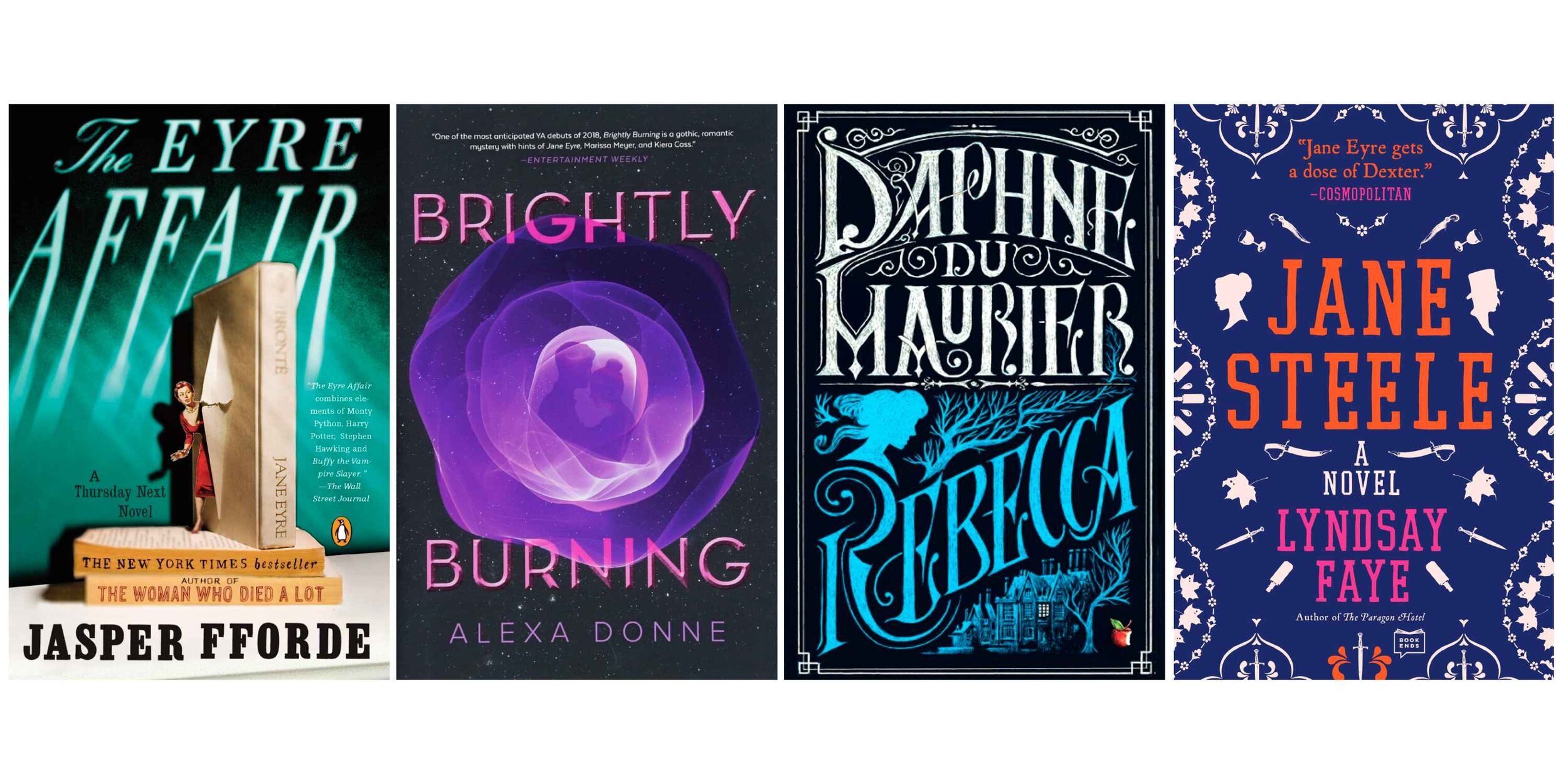






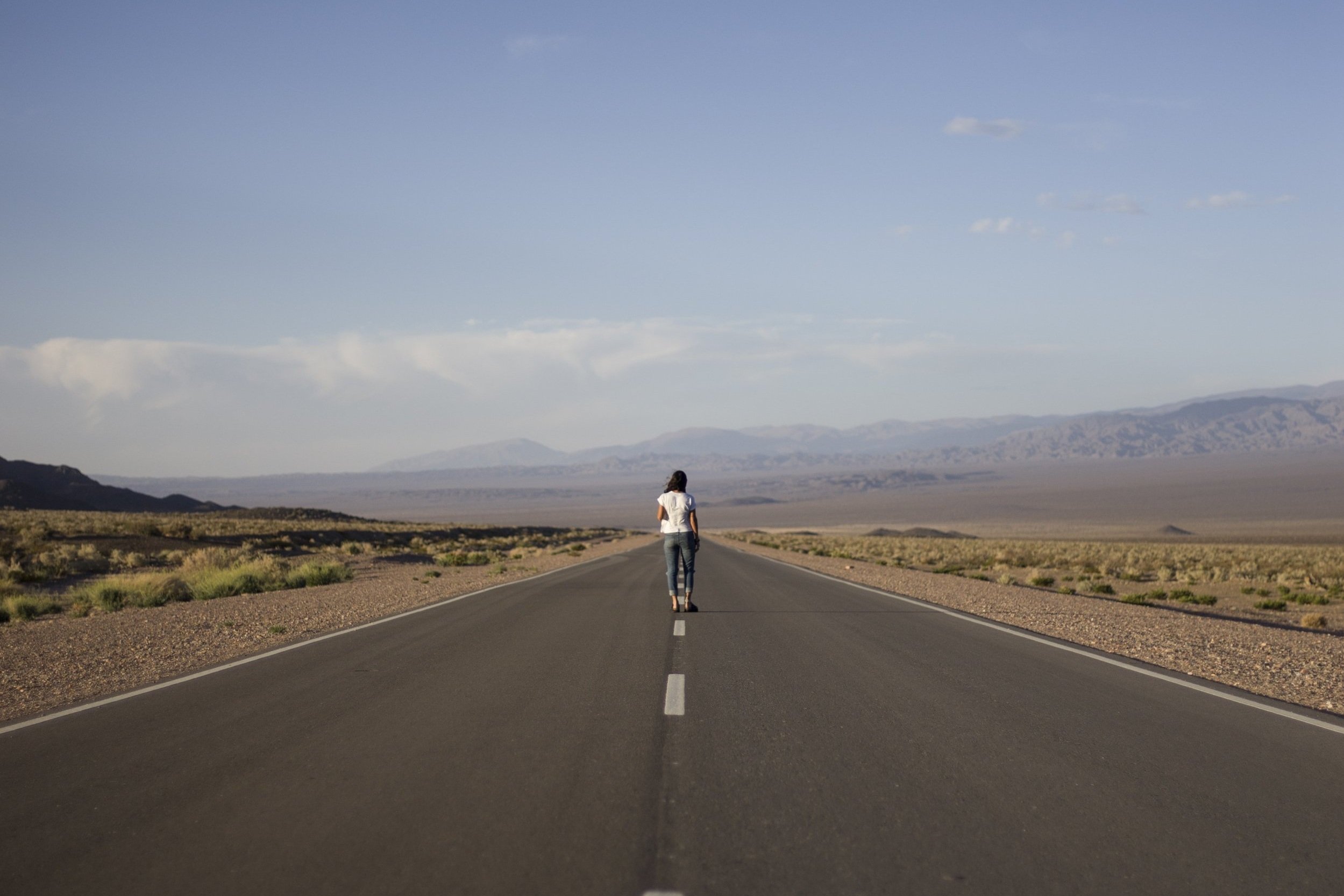
















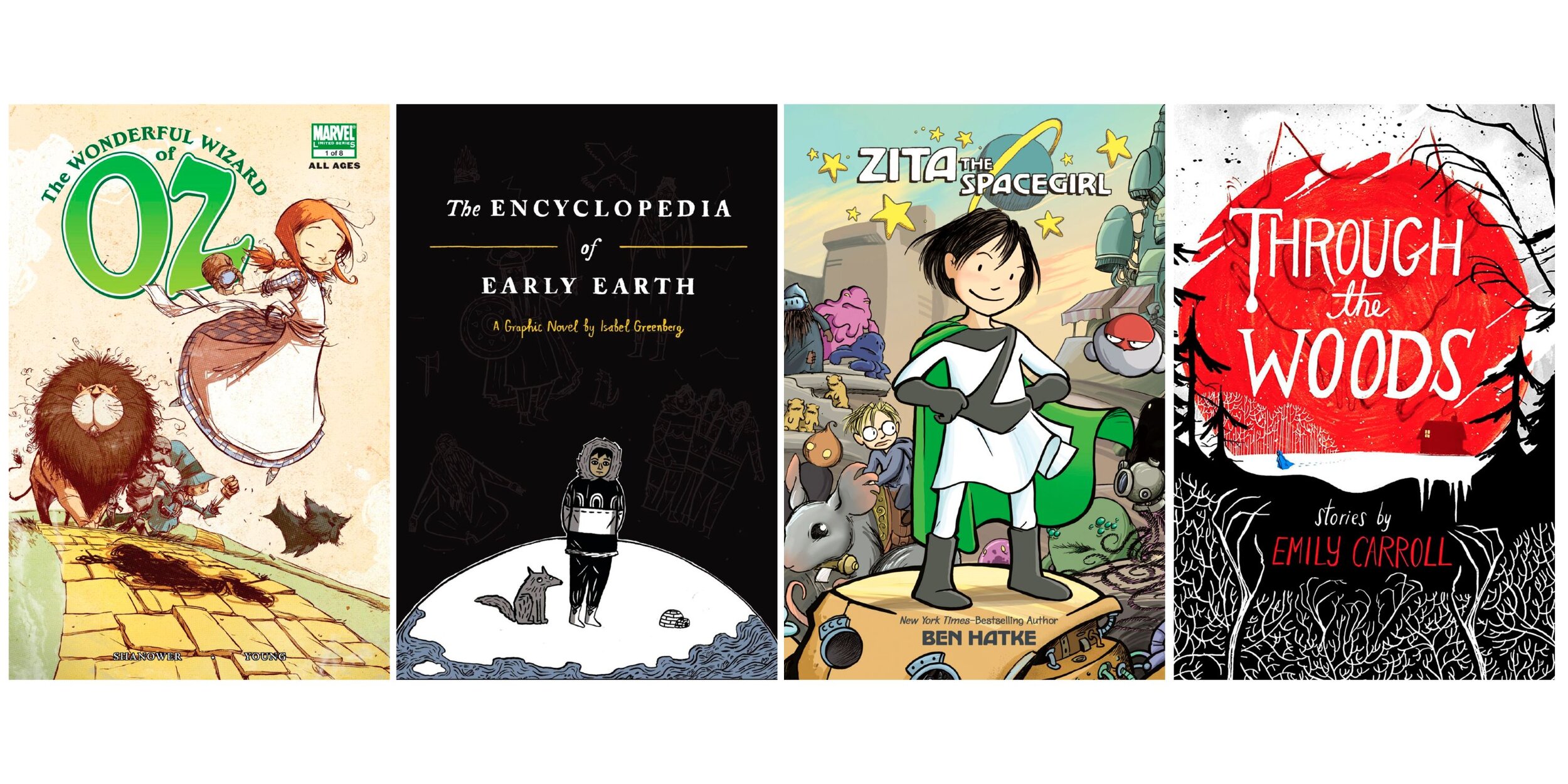











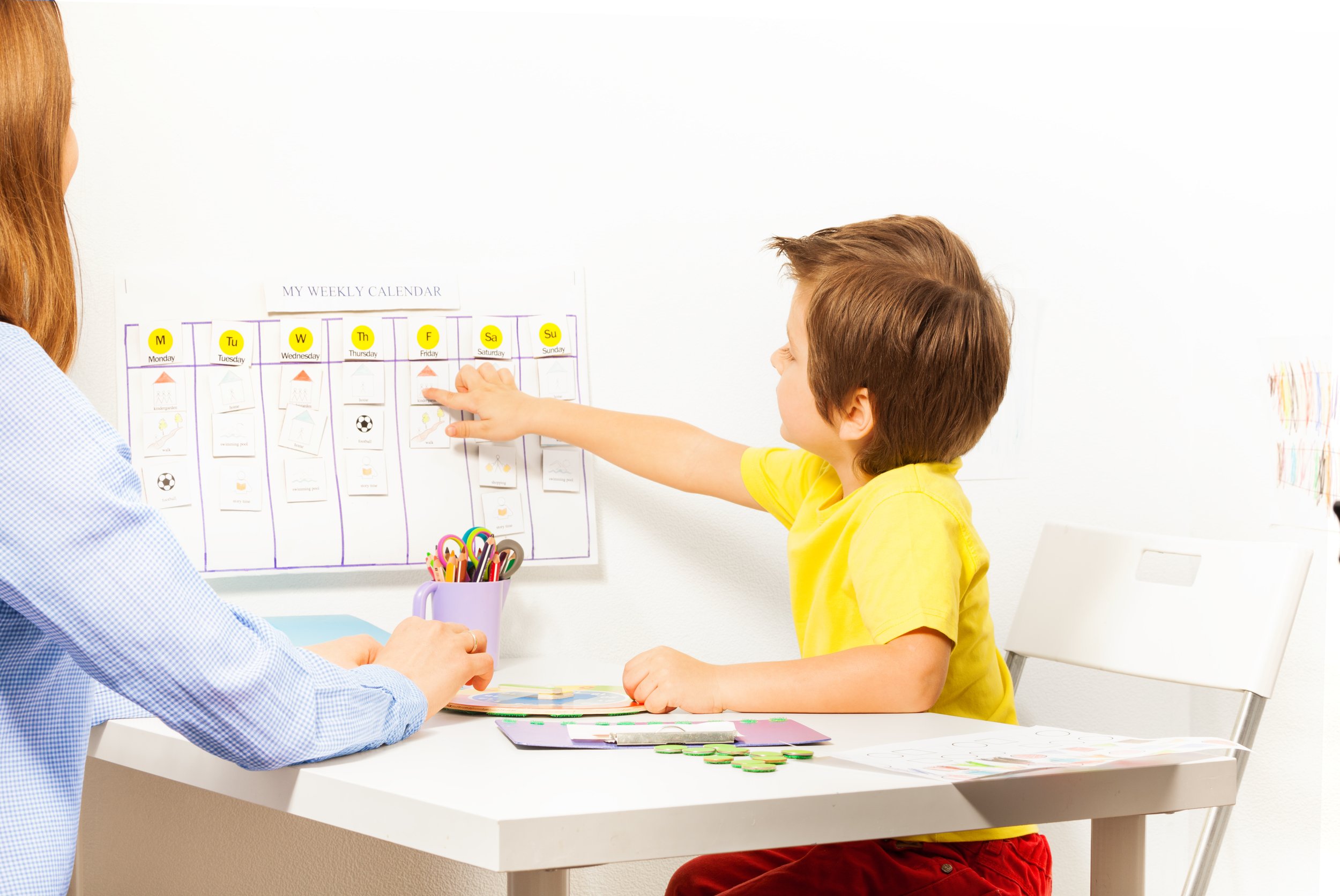









































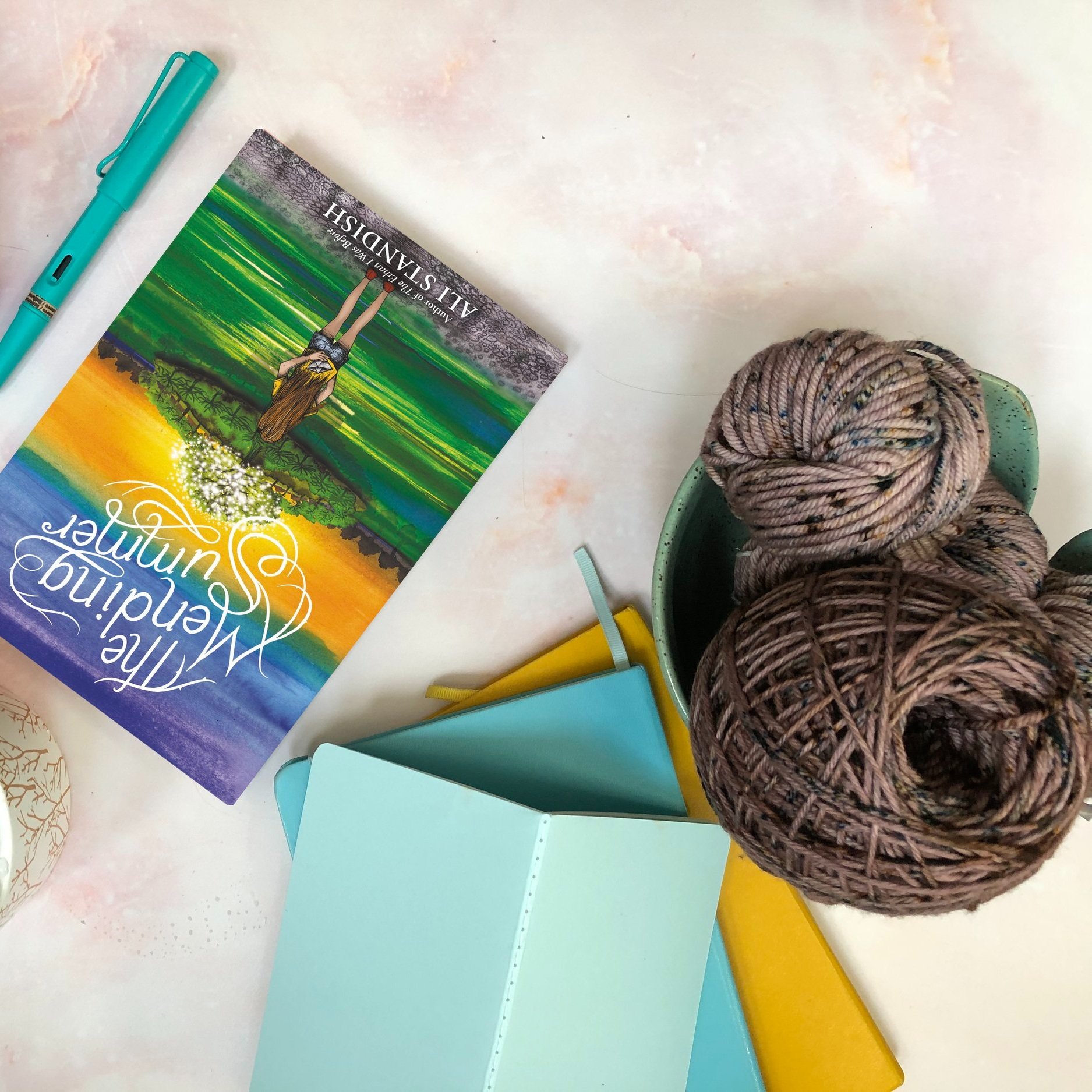















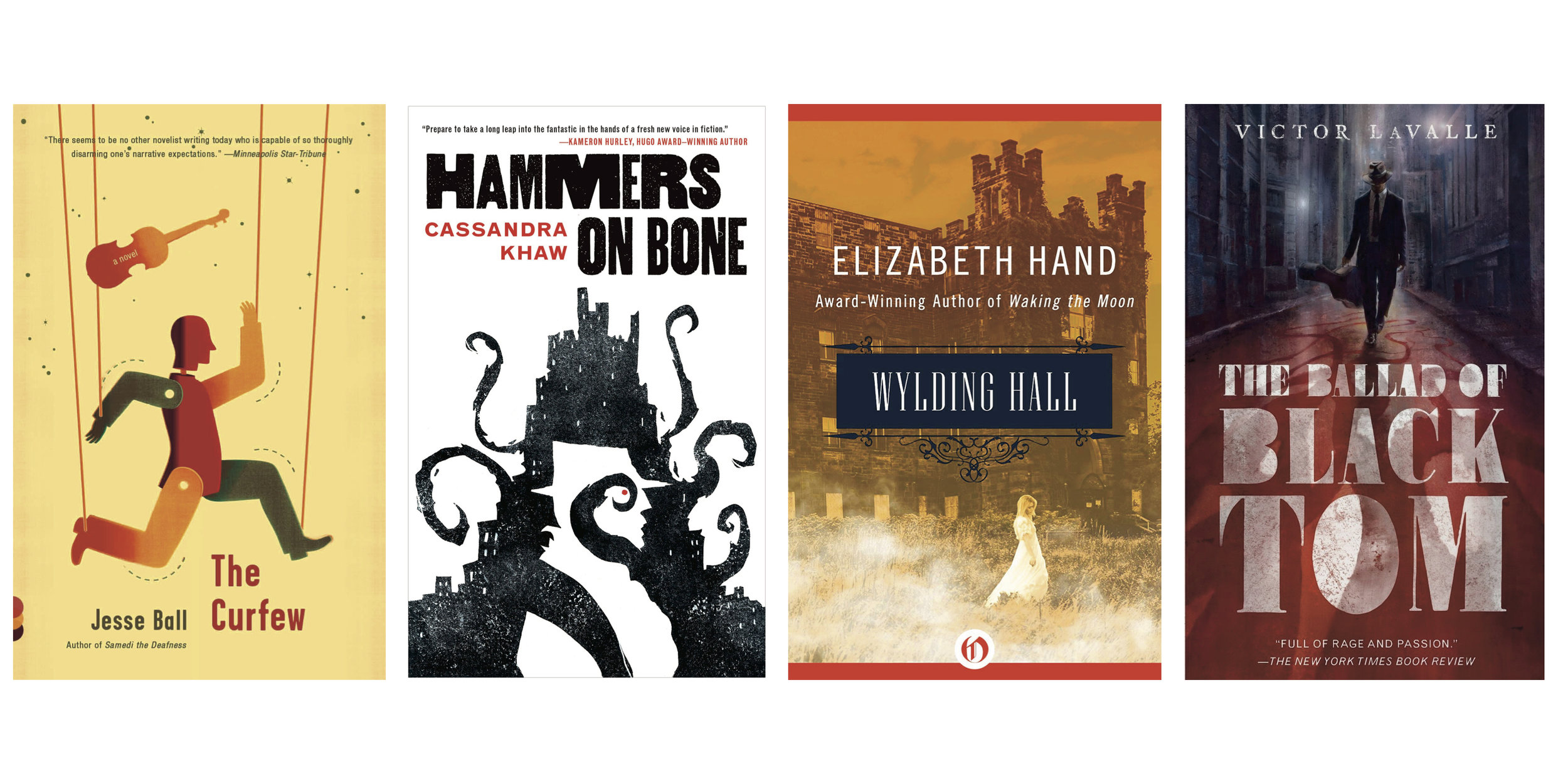






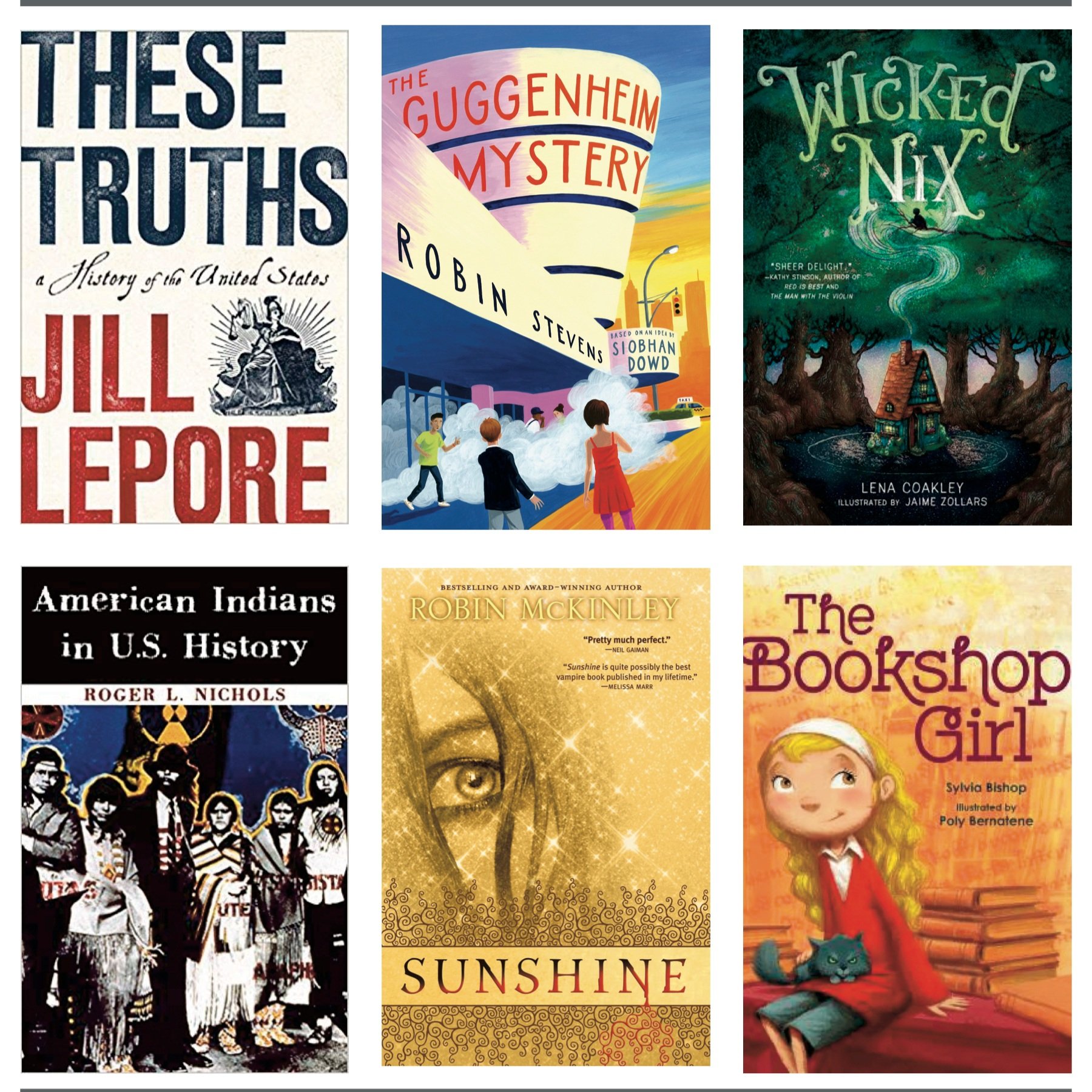





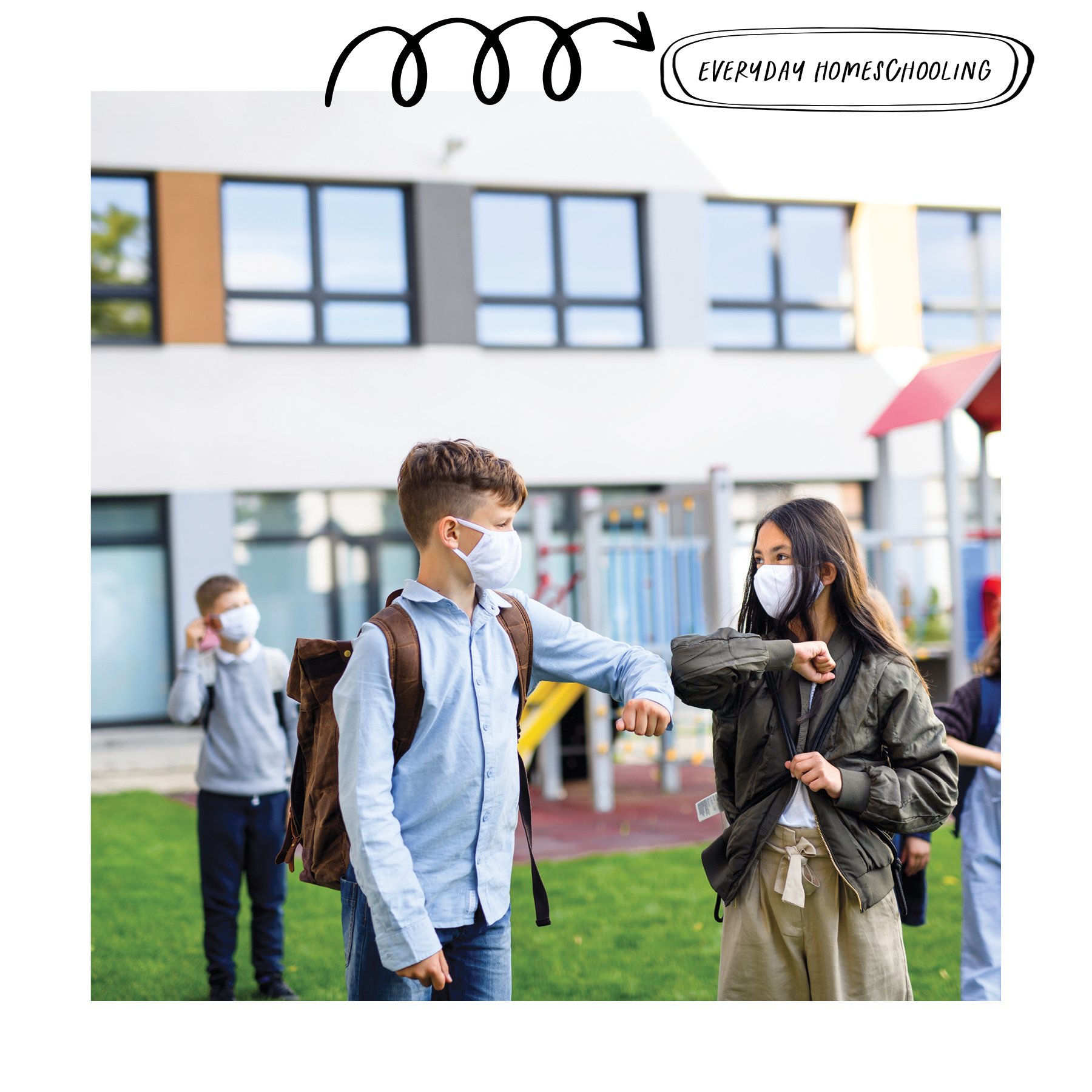

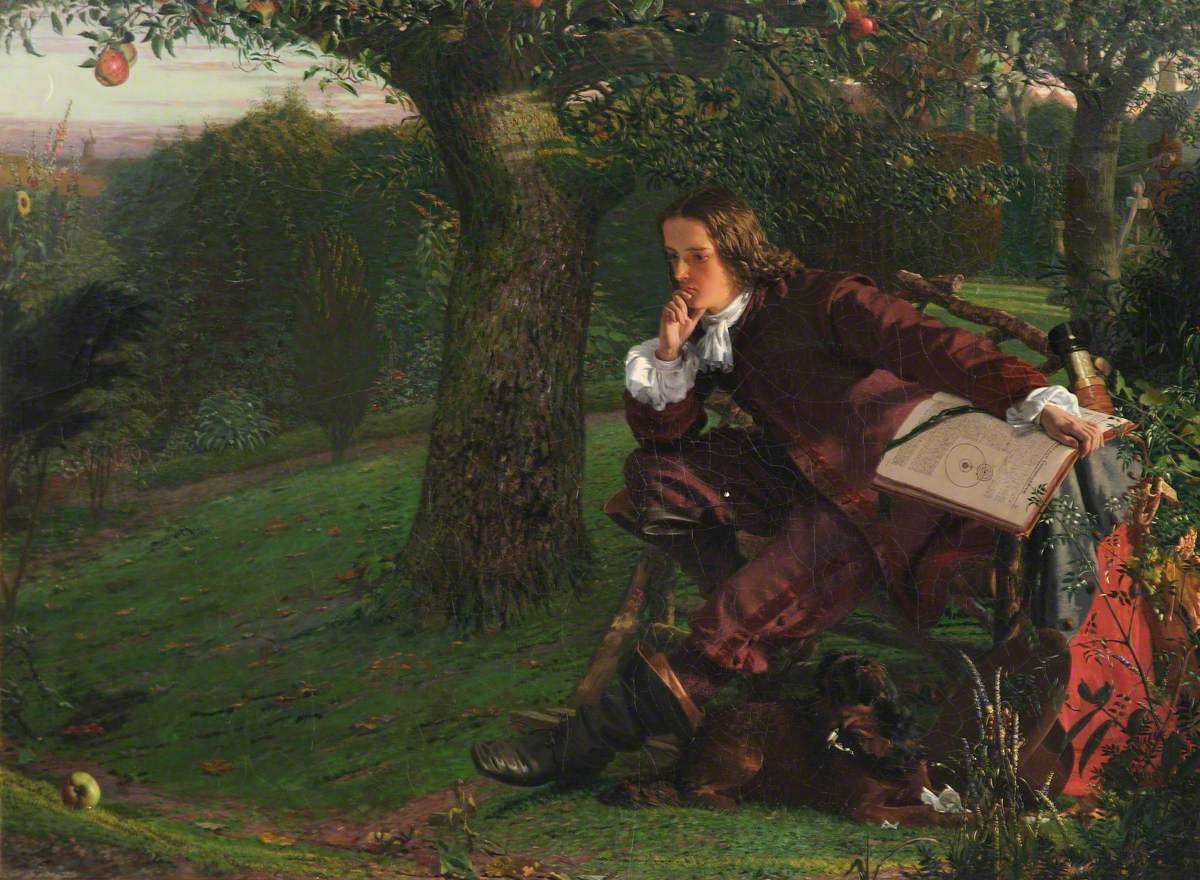








































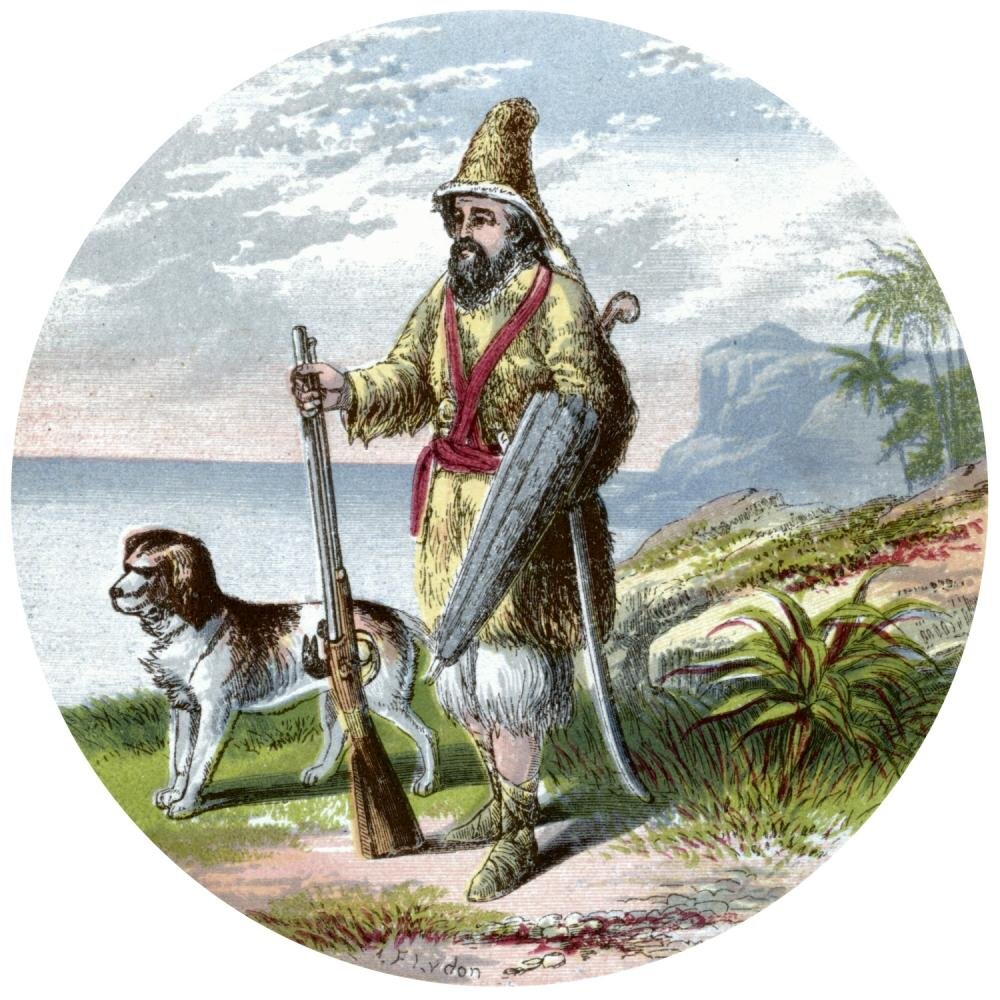




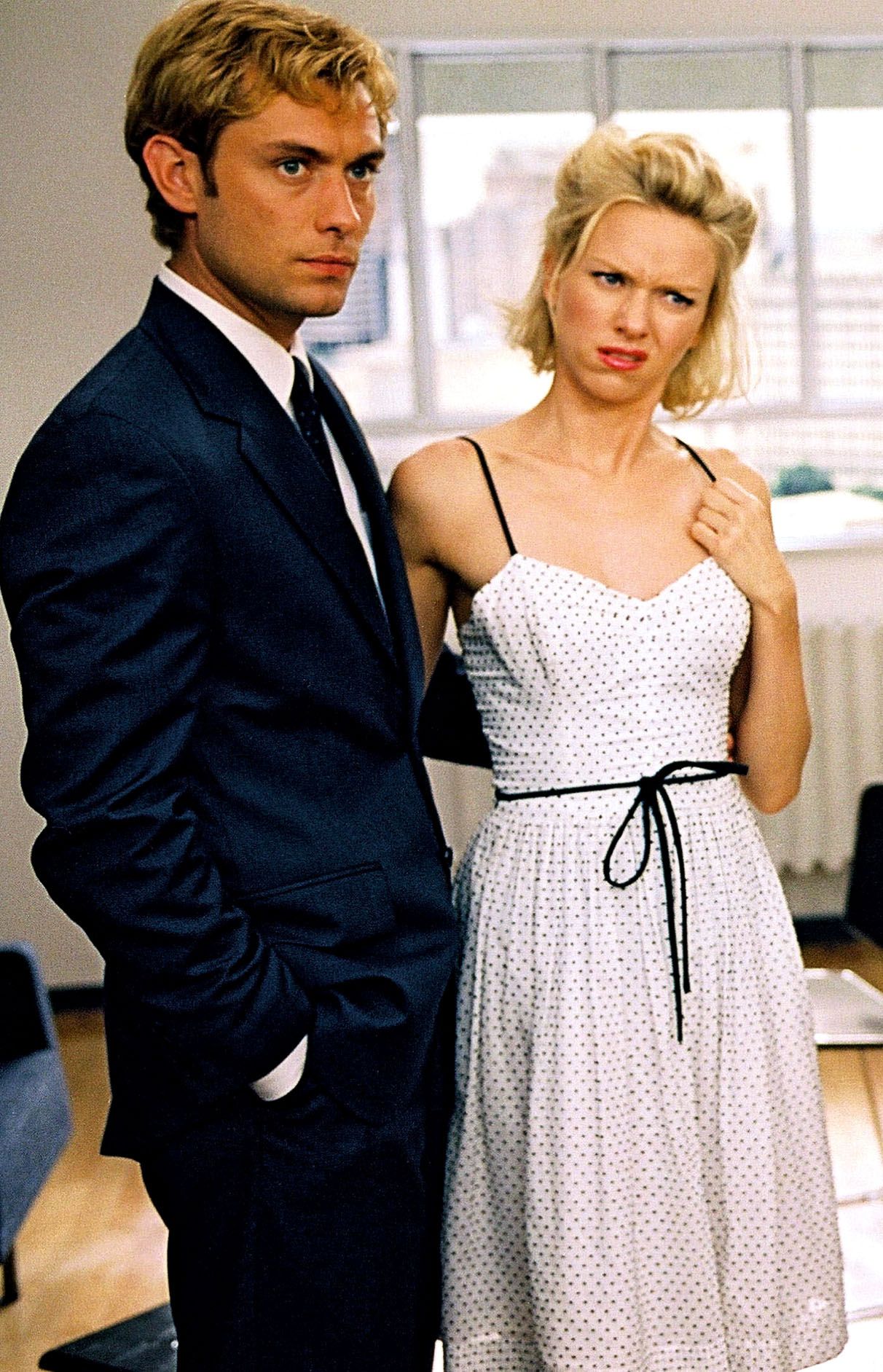







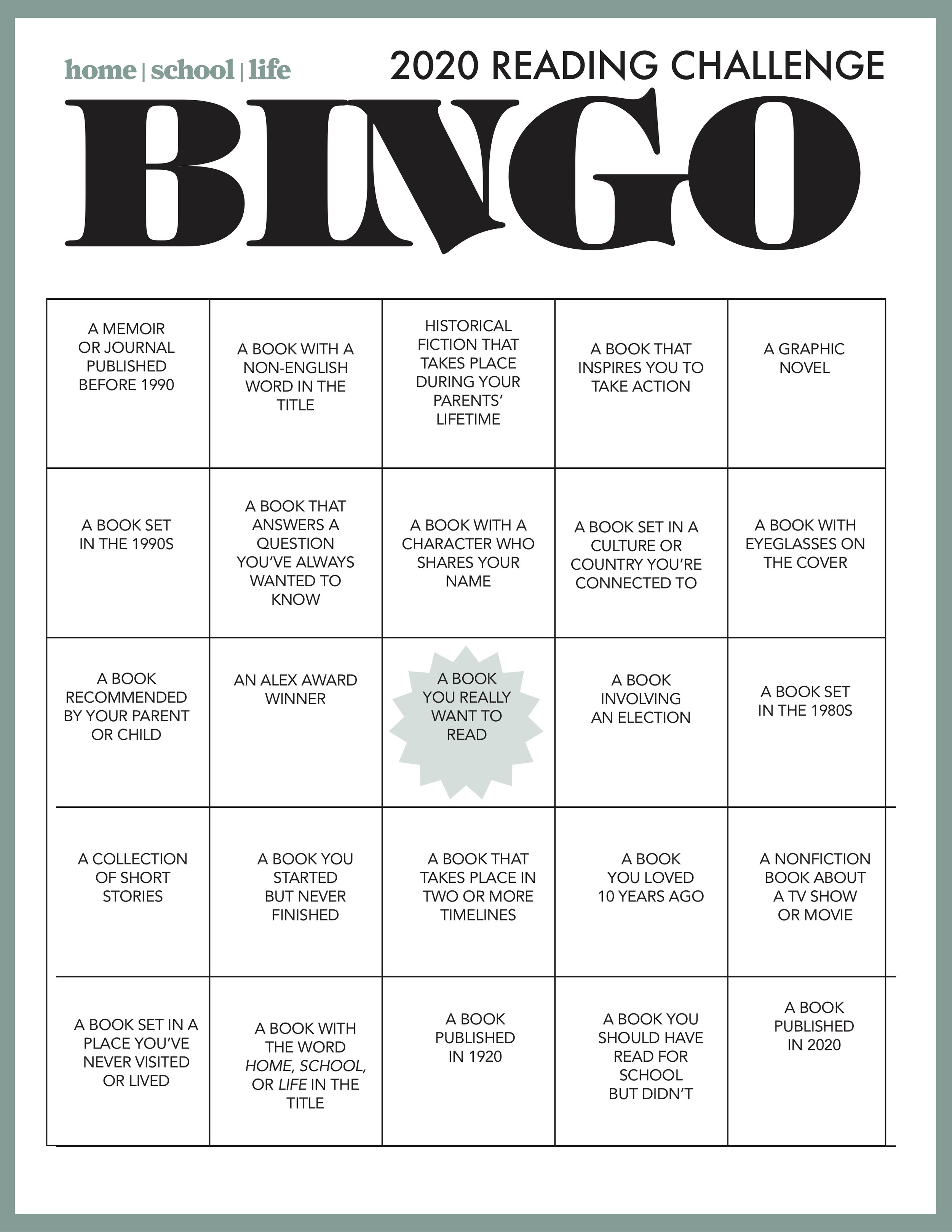




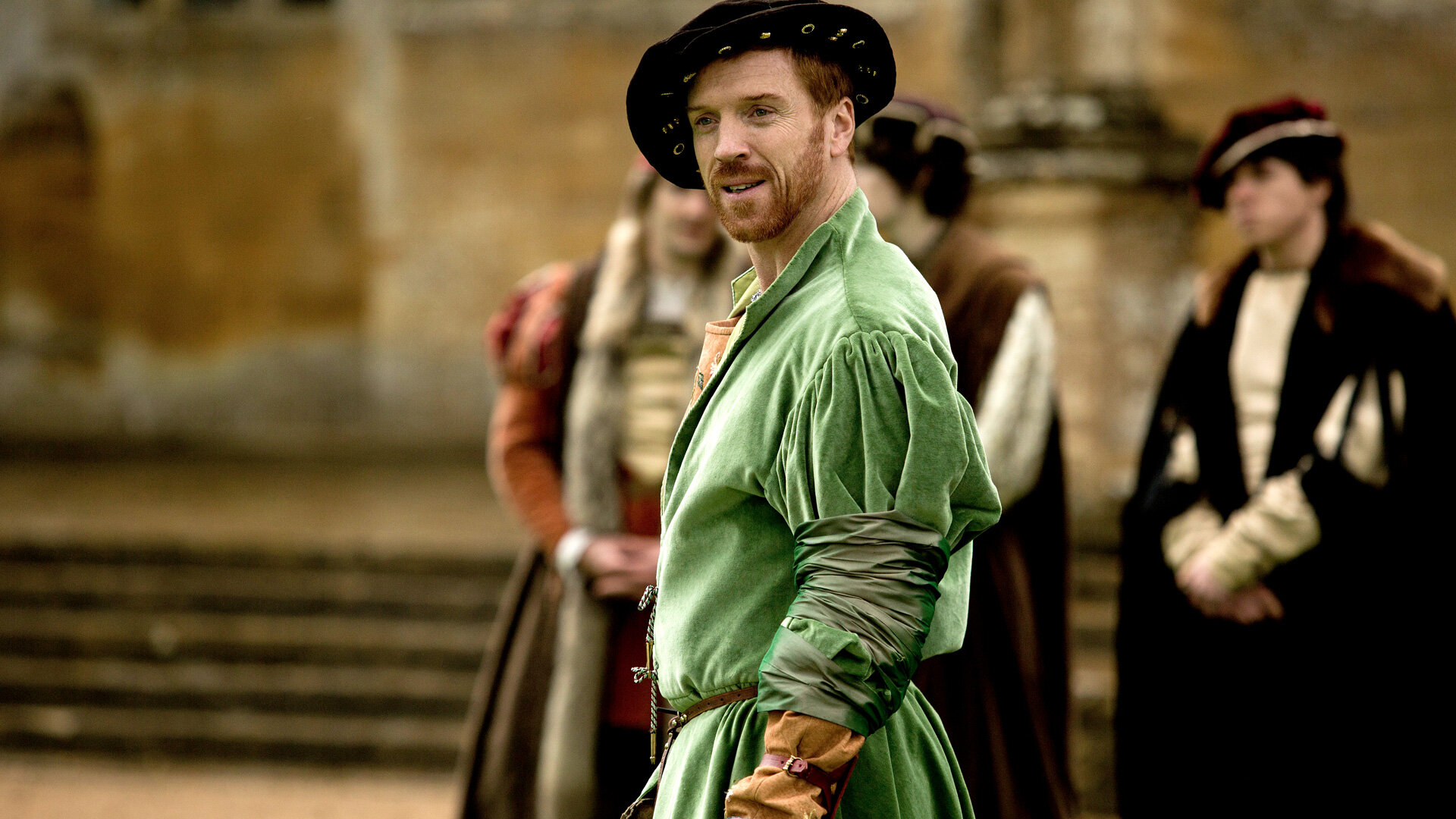






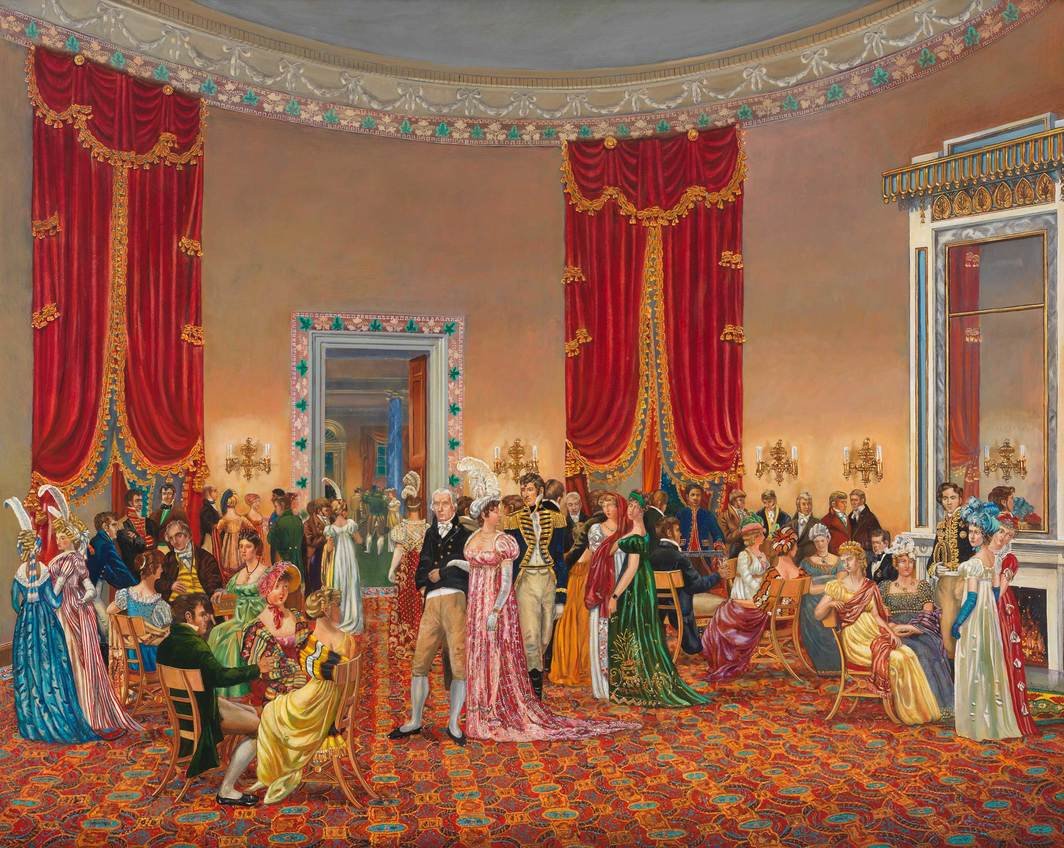
































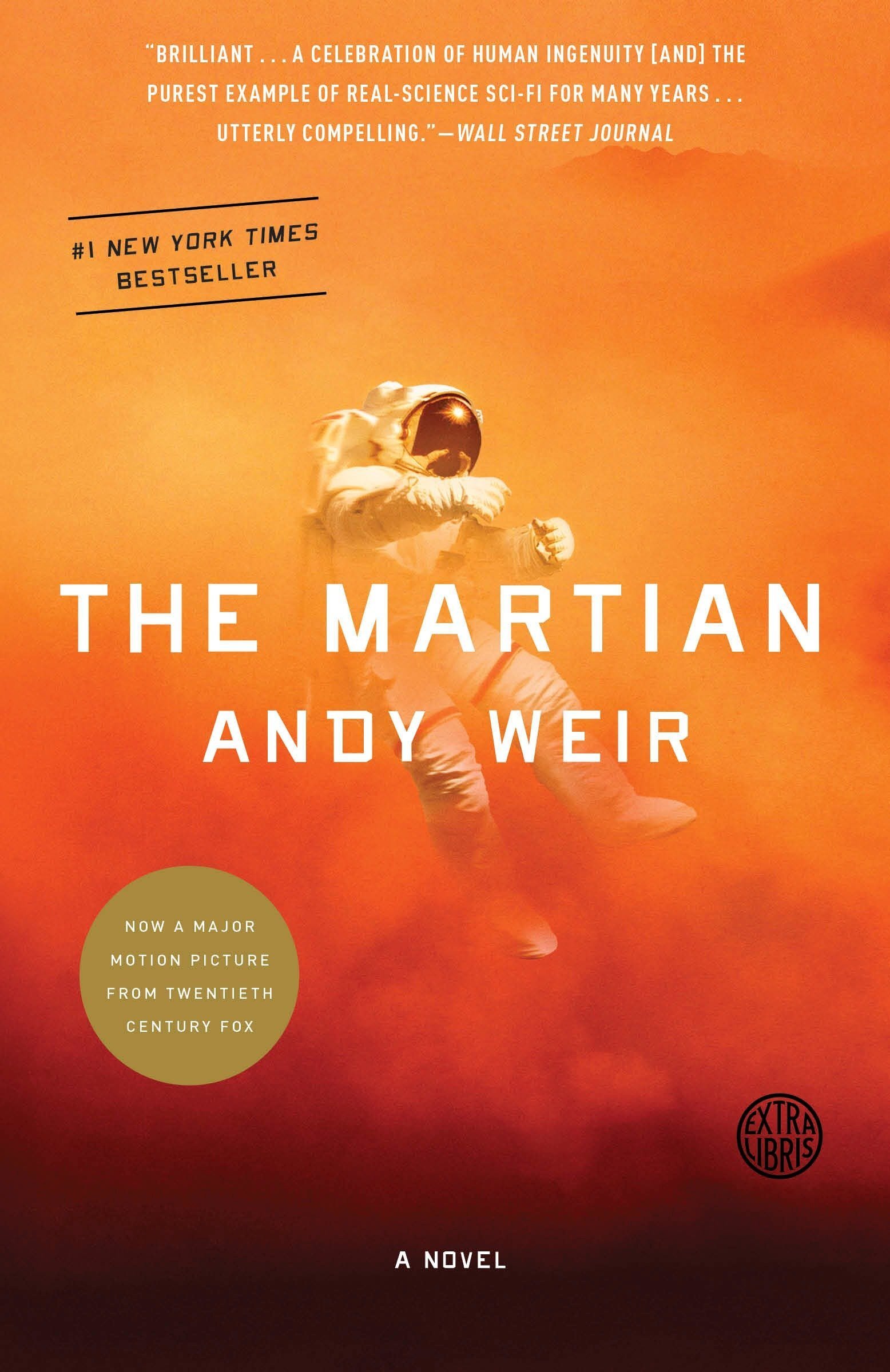




AMY SHARONY is the founder and editor-in-chief of home | school | life magazine. She's a pretty nice person until someone starts pluralizing things with apostrophes, but then all bets are off.